Tseriadvn Native Salmon Bake and Honor Ceremony is an annual, living history event that honors the indigenous people of our area. The US Army fort at Port Orford had a pivotal role in the Rogue River War and the removal of the First People of Southwest Oregon. This is a time for everyone to come together to pay tribute to those who lived here, the spirits of the old ones, and all who traveled the trail of tears to Siletz. It is a time to share stories, music, food and memories, so our history won’t be forgotten.
Rick Cook has played an important role in getting this event established at Tseriadvn State Recreation Site, which was formerly a Quatomah Village. This site has been inhabited for several thousand years. The Honor Ceremony -Salmon Bake originally started in 1993, at the Port Orford Heads, as Rick explains in the video. It was moved to Tseriadun ( Athabaskan, refering to the rocky headlands “the place that sticks out”) in 2005. Many more details are in the video:
Tseriadvn and the Rogue River Wars
Tseriadun was an inhabited Quatomah village when Captain Tichenor arrived in early summer 1851. It was inhabited for at least 7000 years until 1856, when its population was removed to the Coast Reservation at Siletz.
The Rogue River Wars started October 1855 and ended when Chief John Tecumtum surrendered to Capt. Edward Ord at Rinehart Creek July 2, 1856. In several groups, captive Southwest Oregon Indians were brought to Fort Orford over the last few weeks of the war. They were garrisoned at Tseriadun, hence the name Garrison Lagoon/Lake, adjoining the encampment.
At two in the morning of June 20, 1856, the steamship Columbia dropped anchor in the harbor. Later that day, approximately 670 people were loaded in to the Columbia, a ship meant to only hold 100 passengers, and sailed north.
On July 8, after more native prisoners had been brought to Fort Orford, a second voyage of the Steamer Columbia took away about 700 more individuals. Tecumtum and 125 of his band were not included.
“Old John” Tecumtum, as the Whites called him, was the last warrior chief to surrender after his standoff at Big Bend on the Rogue River. While in captivity at Tseriadun, Capt. Ord took pity on John’s band. It is said Ord brought down a steer and slaughtered it to feed the starving people. As punishment for his resistance, under Major John Reynolds command, Tecumtum and his band were force marched north to the Coast Reservation. This became known as the “Siletz Death March”. Because of the terrain, the grueling march took nearly a month. Many died in route.
According to Oregon Historian, Stephen Dow Beckham, the Native population of Southwest Oregon was conservatively estimated at 9,500 in 1851. Only 1943 survivors were counted at the Coast Reservation in 1857.
Prior to the coming of Euro-Americans, Tseriadvn was a place of life and peace. Each day, fires were built, food was prepared, children were raised, stories were told and songs were sung. Without forgetting the sorrow brought to the village, we should also remember and honor life before. The spirits of the old ones are still at Tseriadvn. When there, if we try, we can feel their presence and share their memories.
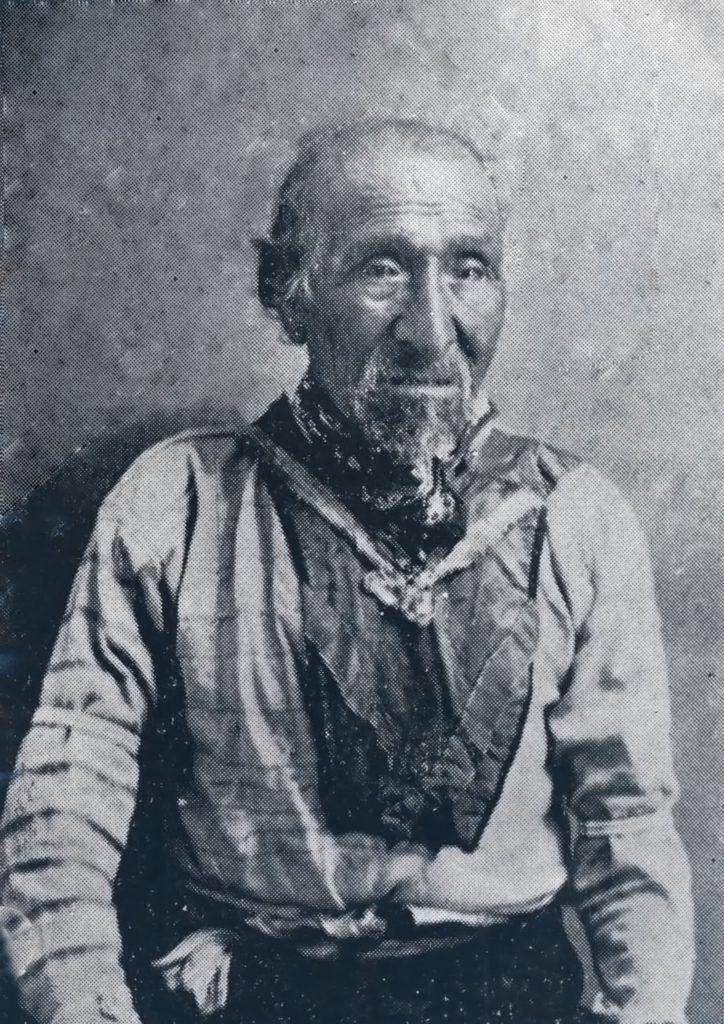
Tecumtum means “Elk Killer”
MAY 2024

Thanks to the Confederated Tribes of the Coos, Lower Umpqua and Siuslaw for the wonderful salmon. Thank You Mark Petrie for doing the cooking again this year
Firewood donated by Darin Faris
This is years gathering was so beautiful
Tummies full of incredible traditionally cooked salmon
The ancient village filled with powerful old songs
Old and New friends connecting and sharing wonderful stories!! “Hi new friends!”
Our youth helping me lead the way to release the salmon back to the sacred water
So many beautiful blessings and prayers shared
Pockets full of glowing agate treasures
Whales dancing in the water off of the moonlit beach
Old sacred grounds for medical gathering
My heart has been filled once again by these sacred ways ,places and people. Thank you my friends!! Love you all!! And huge thank you Rick Cook for everything that you do for the people and these beautiful lands.
And to all of you that didn’t make it, you were very missed!!! I hope to see Everyone next year!! Echo Miller
May 2023
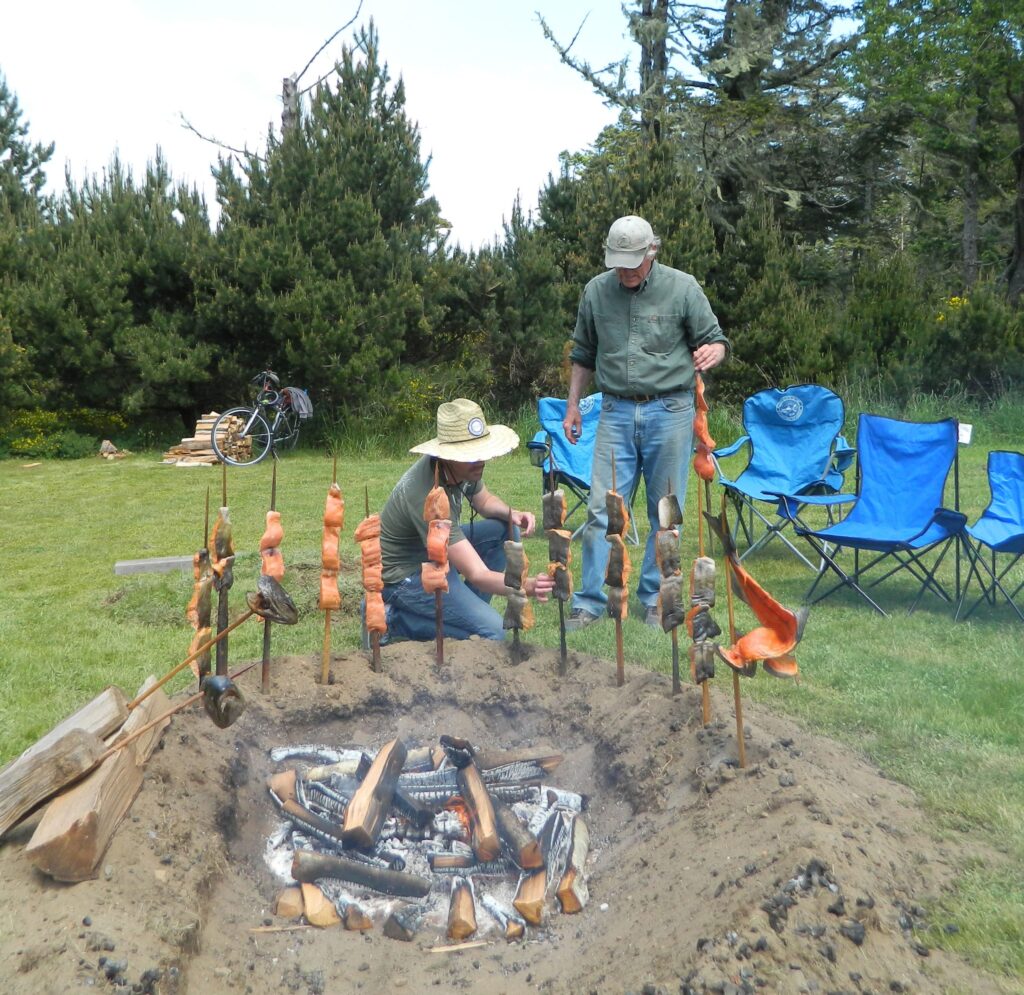
Thanks to the Logan Family of Siletz,
Chief Doc Slyter and the Confederated Tribes of Coos Lower Umpqua Siuslaw Indians
for providing the salmon this year.
Also thanks to Jerry Becker of Port Orford for the Alder wood.
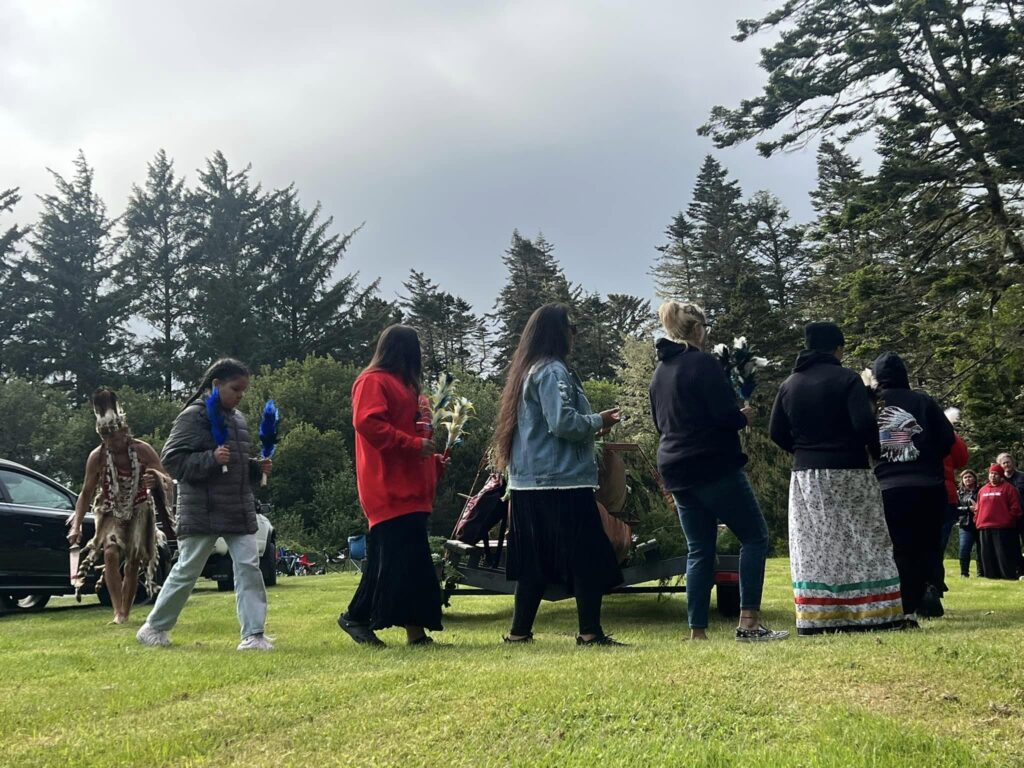
The canoe was named Lhuke Xun-ne (Salmon River).
The Spruce log came from Logan Family property.
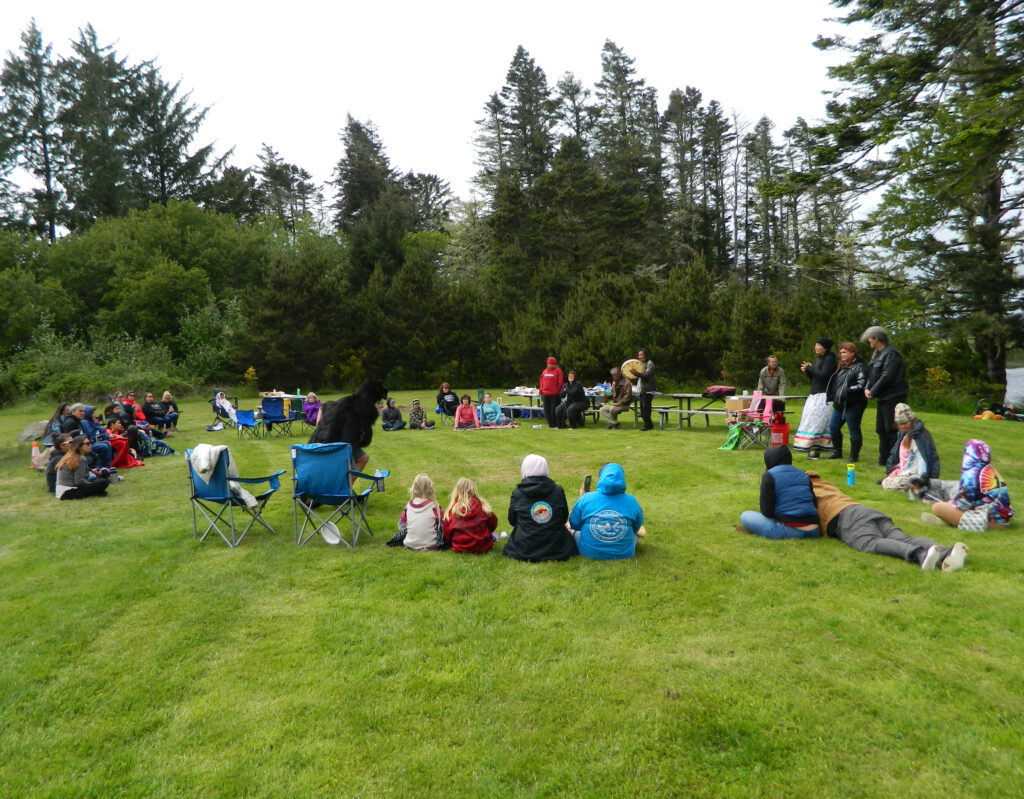
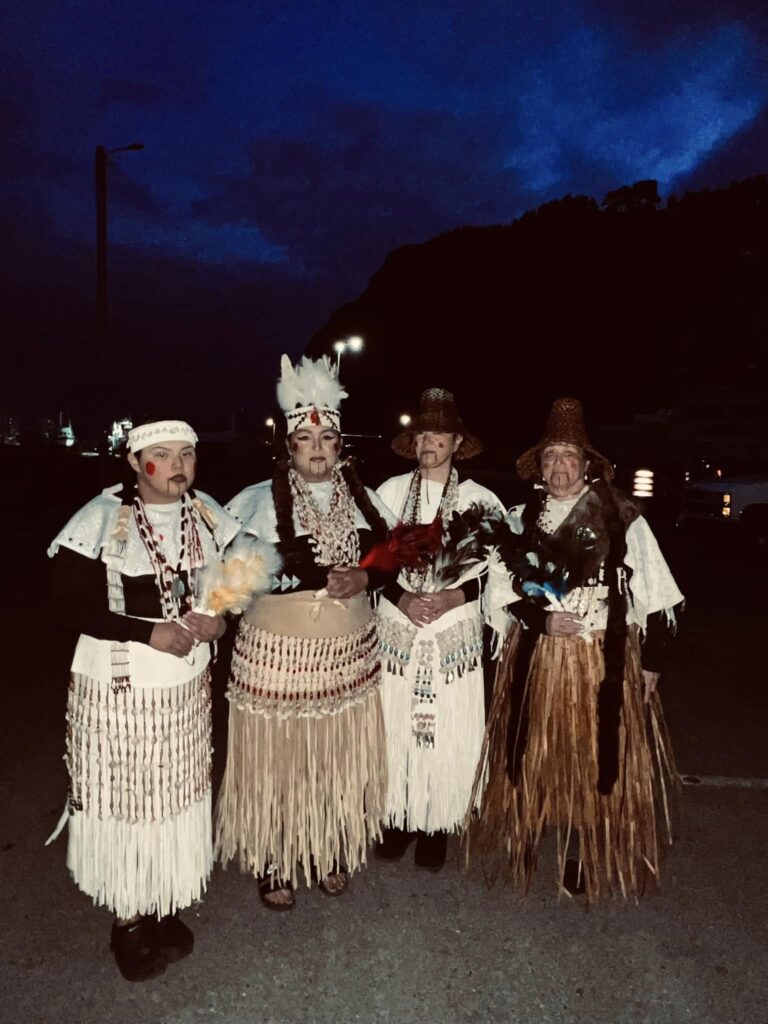
The Nasomah Singers, lead by Ko-Kwel Brenda Meade and family, were the first to re-introduced the Feather Dance at Tseriadun during the Salmon Bake. Willie and Winona Butler Towner, later continued the tradition, Dancing at Port Orford Dock Beach.
May 2022
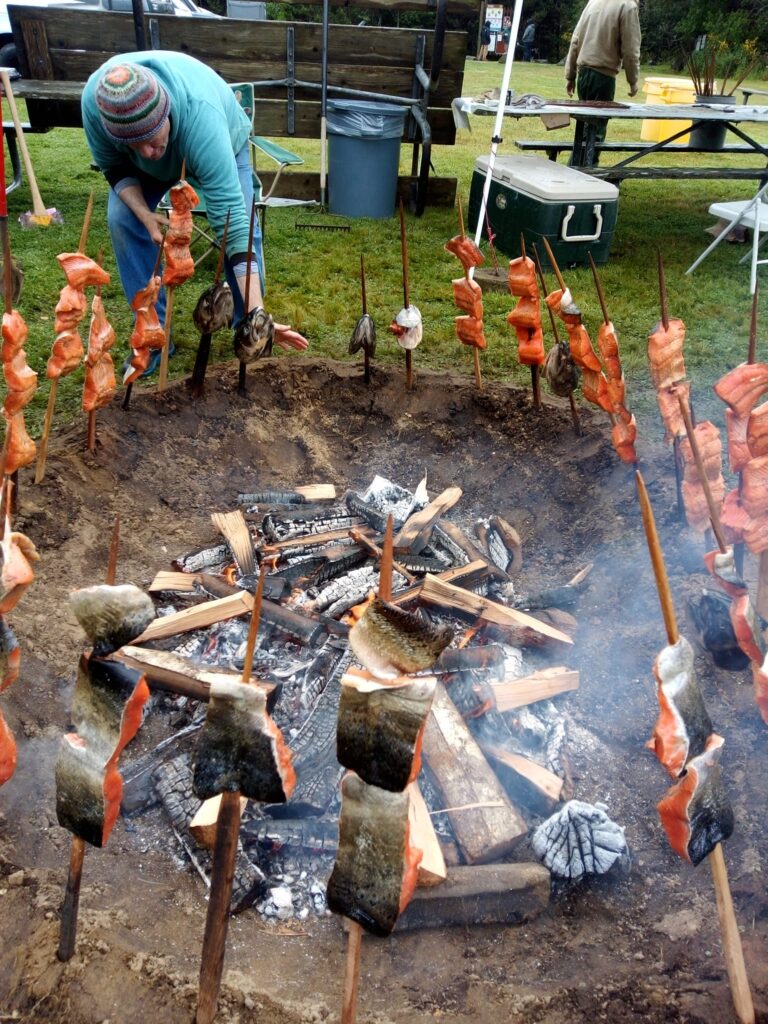
Salmon cooks this year were, Head Cook Mark Petrie, with helpers, John Shipp and Mark Lankton Photo by Nina Fry
Video by Crystal Futch
May 2019
Earl Huitt shares a story with the group before everyone enjoys the salmon that has been prepared in a Yurok way of cooking, on Redwood stakes, taught by Yurok Elder Grant Pilgrim. Earl is Modoc.
And Uncle Speedy shares one last story before the meal is served.
More Photos of the event at Tseriadun 2019
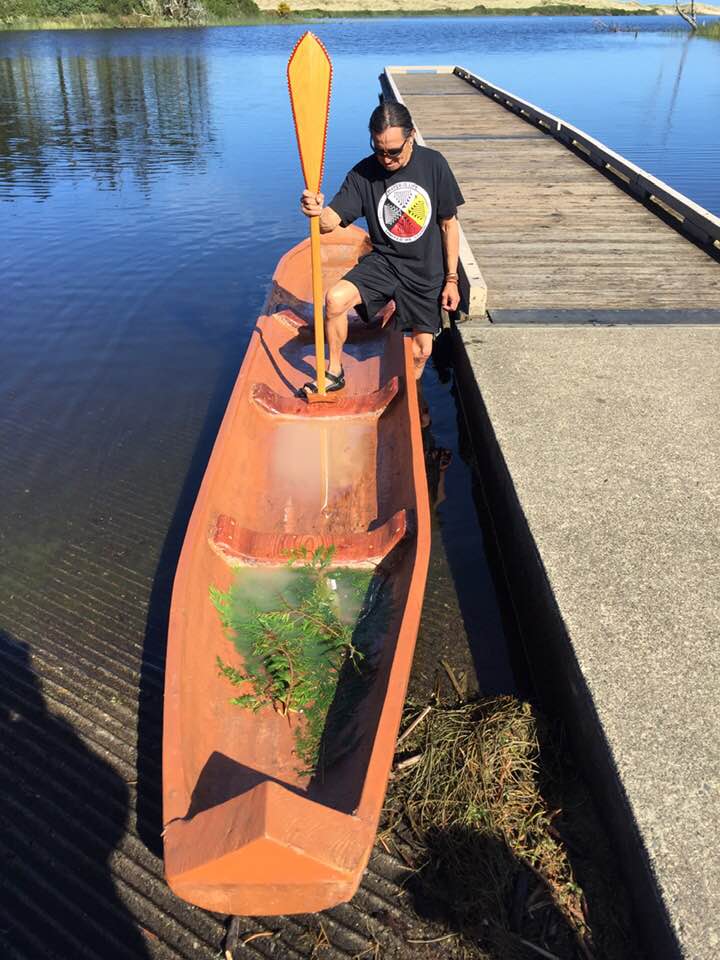
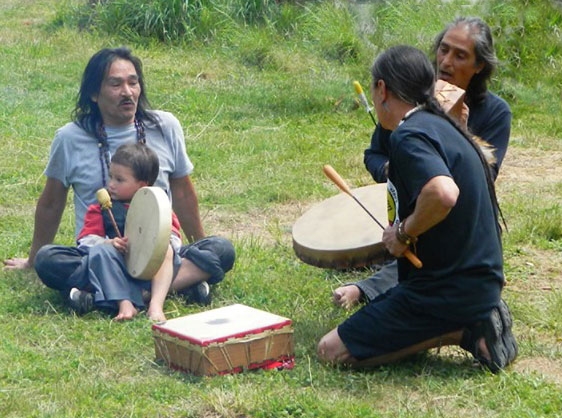
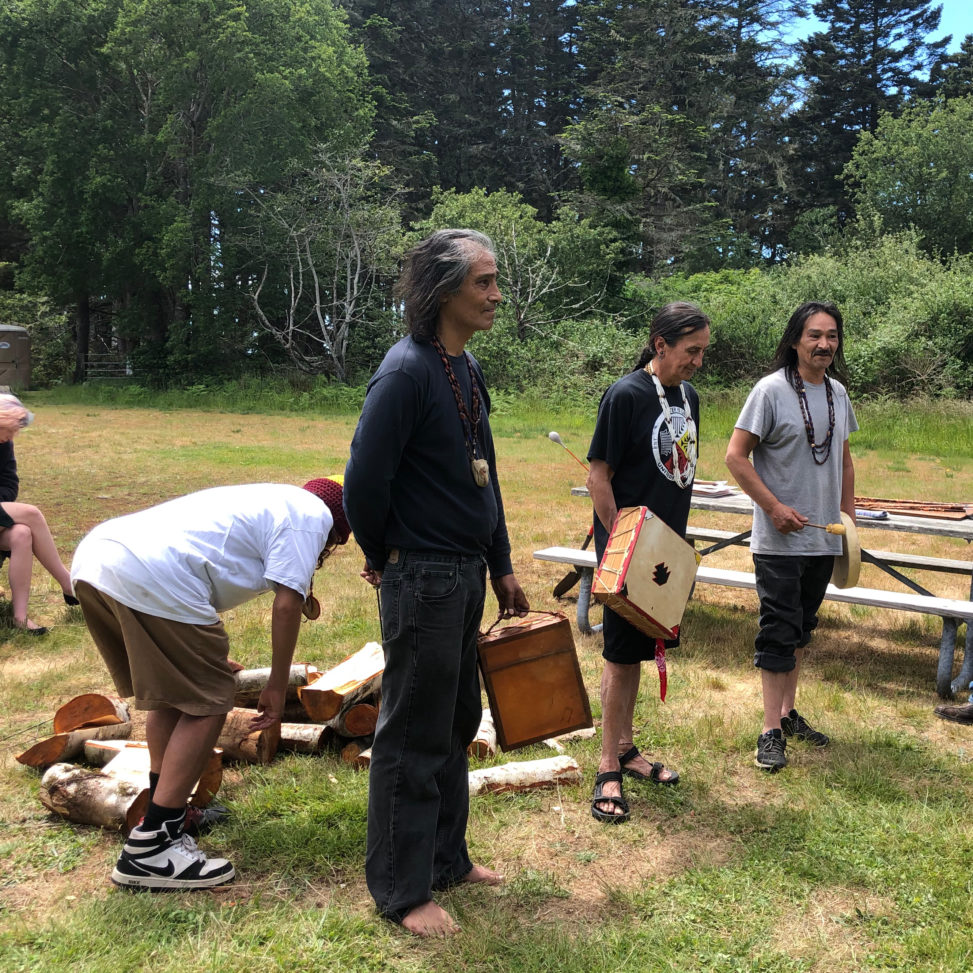
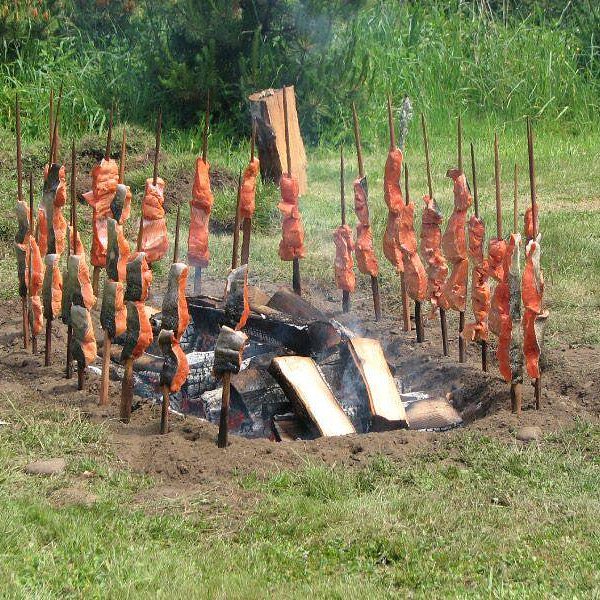
The incredible salmon meal prepared in the Yurok tradition. Doug Barrett and the Confederated Tribes of Coos, Lower Umpqua and Siuslaw Indians donated the fish for the occasion. this year.
Also thanks to Nick Hensley and his crew for donating the Alder for the fire.
Photos and More From Earlier Years
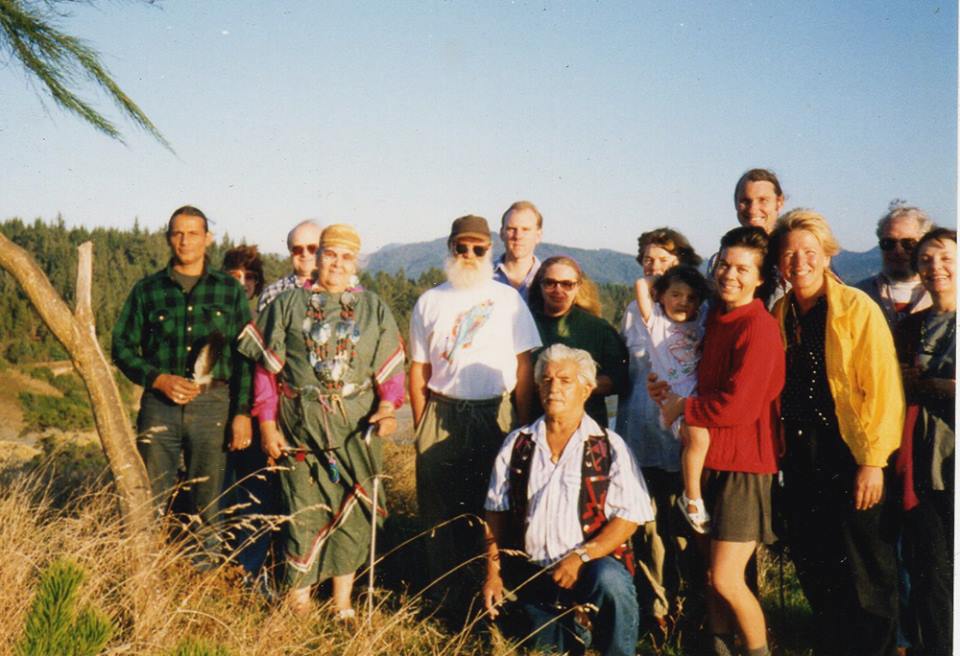
The Port Orford Curse
As the story goes, a young local native came to town to visit his mother who was living near the fort, (probably the village at Tseriadun). When a group of white miners saw him. They believed he was a “trouble maker” responsible for raids on their camps. The miners made prisoner of the young man and took him to Battle Rock where he was lynched. His mother attempted to come to his aid, begging the mob to let her son go. As they hung the boy from a tree on the Rock, his mother stood on Fort Point and chanted a curse on the town.
(Fort Point is adjacent and to the north of Battle Rock, where the citizens fort was erected).
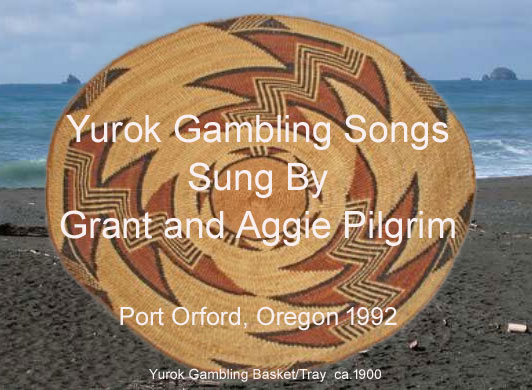
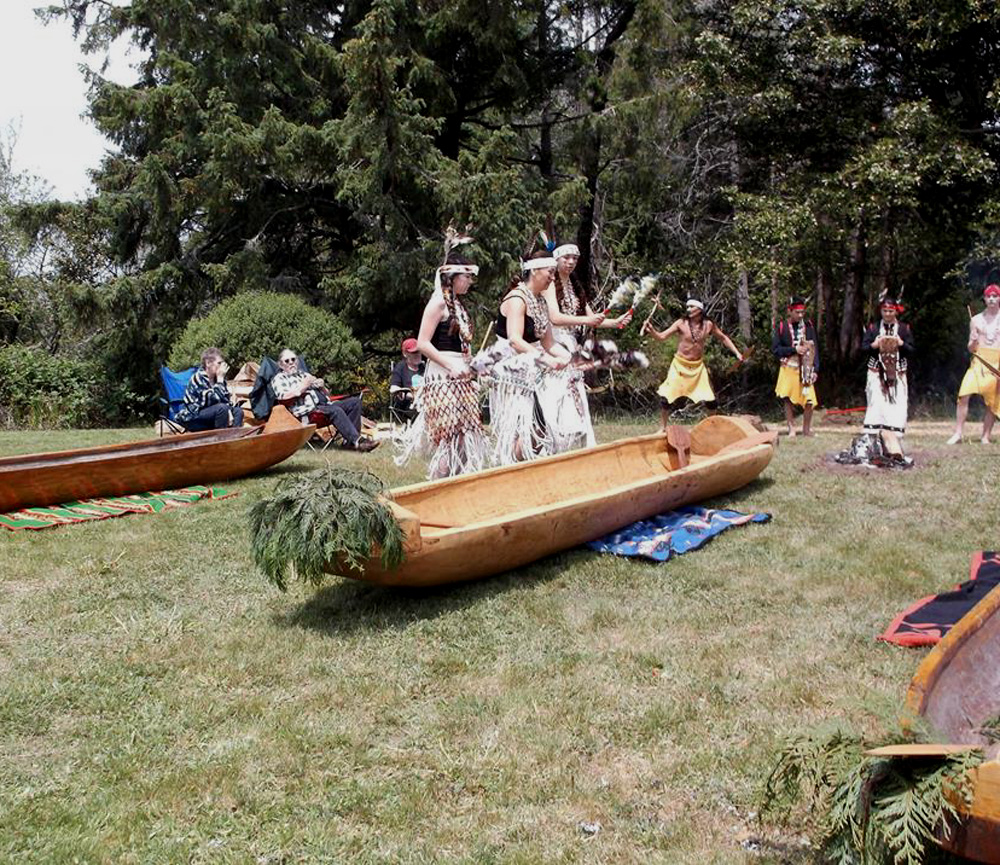
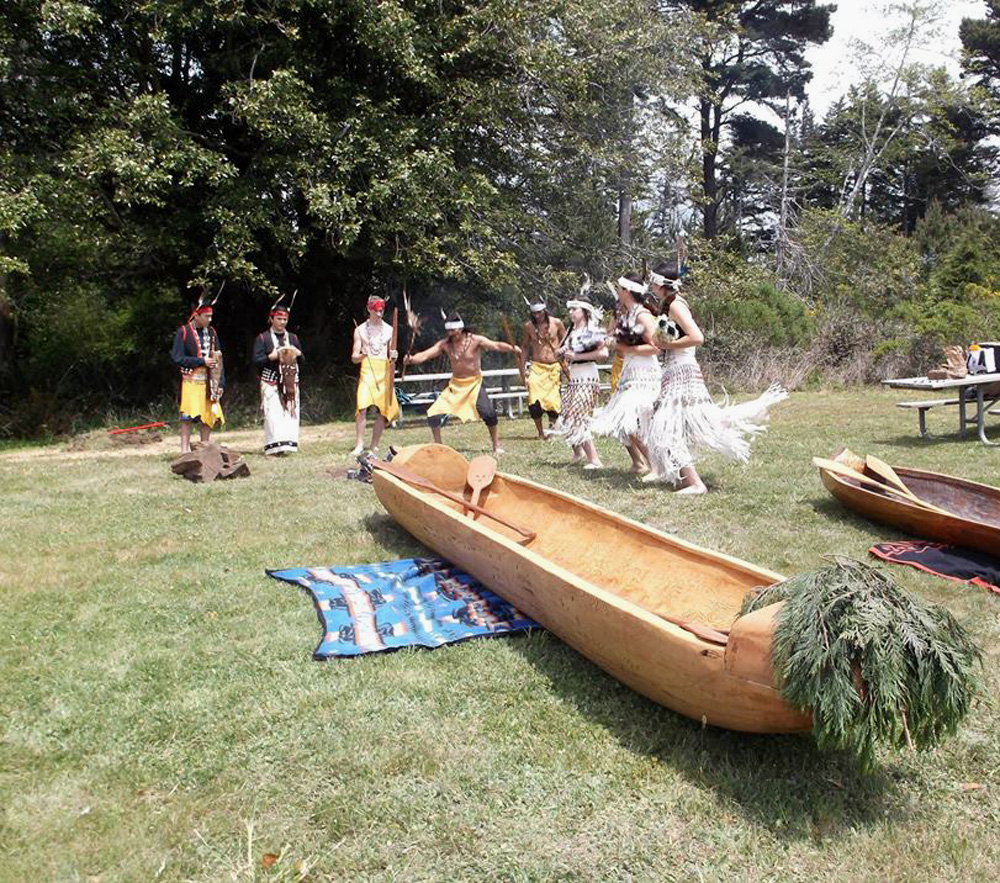
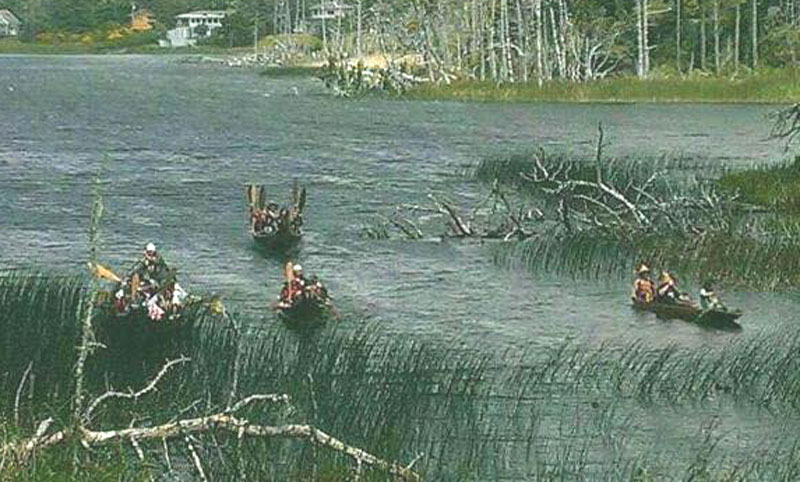

Sixes River Native
Jakie lived in Port Orford in the latter 1800’s. Old time Locals recalled him paddling his dugout canoe on Garrision Lake. Jakie and Whiskers, chief of the Quatomah escaped Siletz and returned to the Sixes River. Whiskers is buried on the Sixes. Jakie is on Euchre Creek.
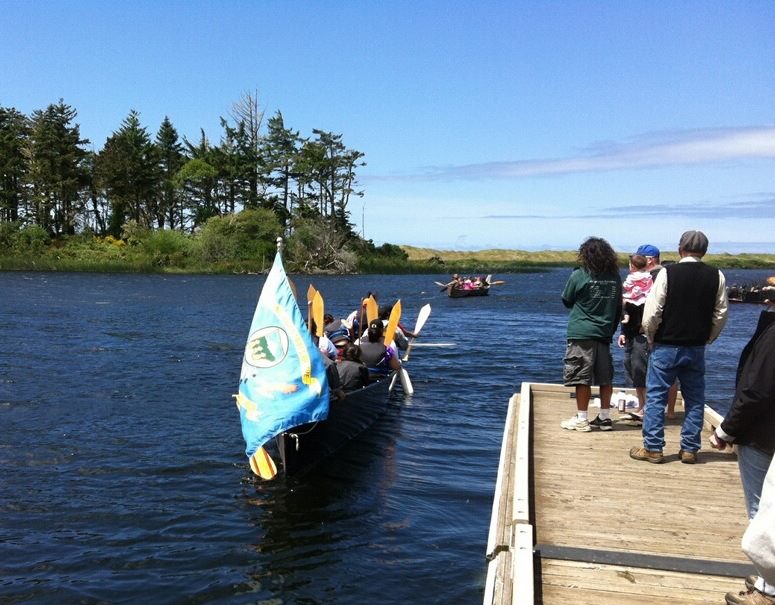
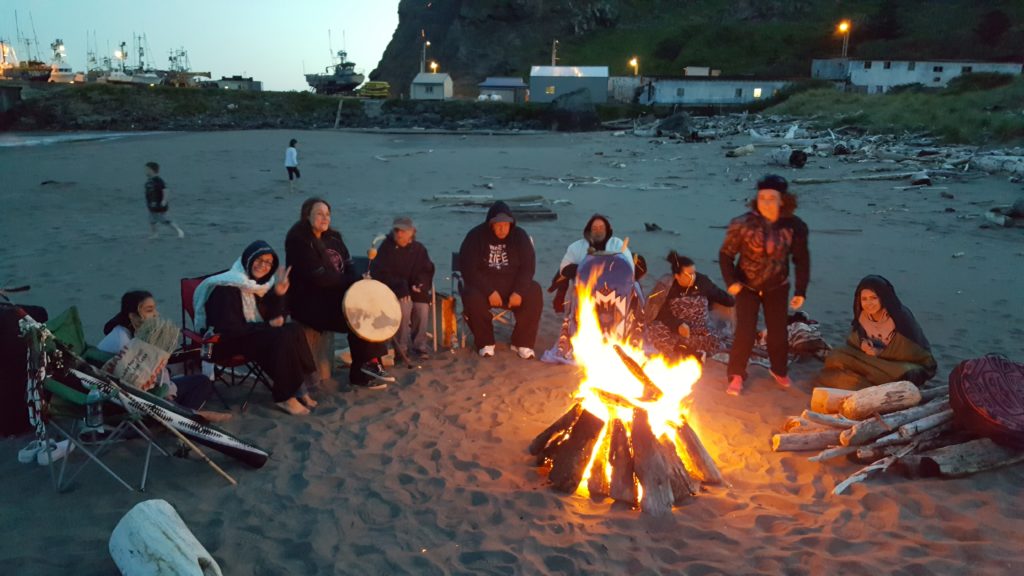
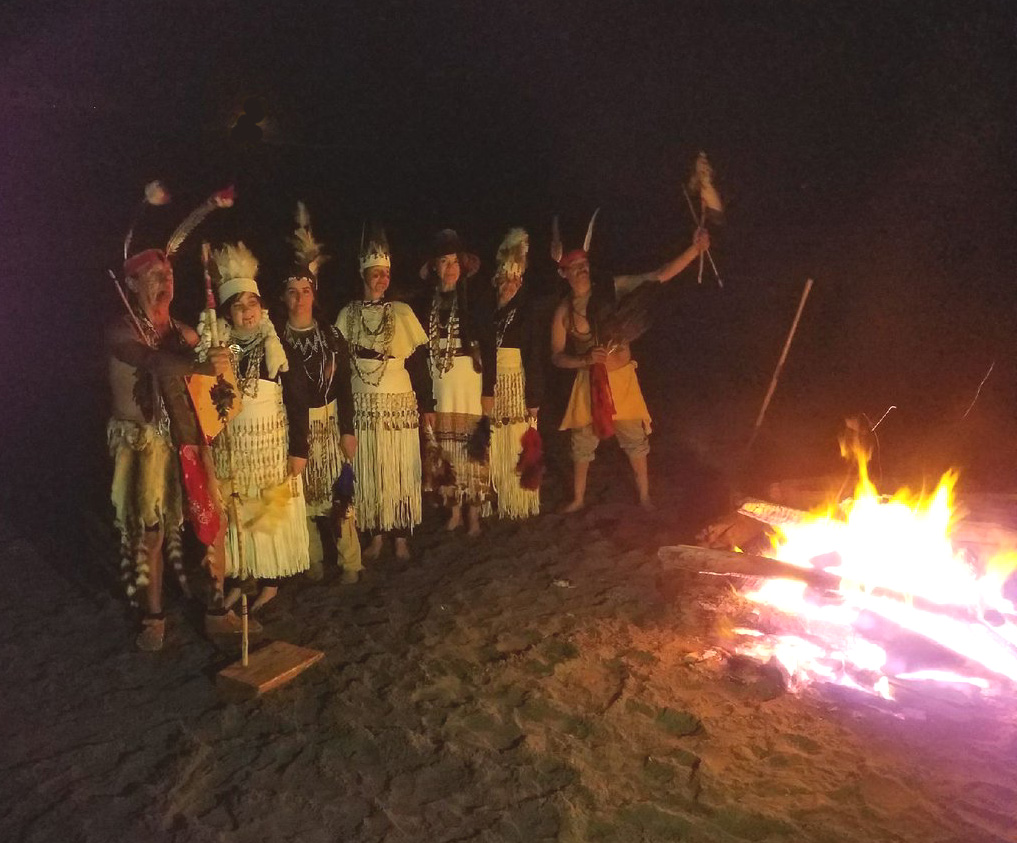
Fire and Feather Dance at Port Orford Dock Beach night before Tseriadvn Honor Ceremony/Salmon Bake
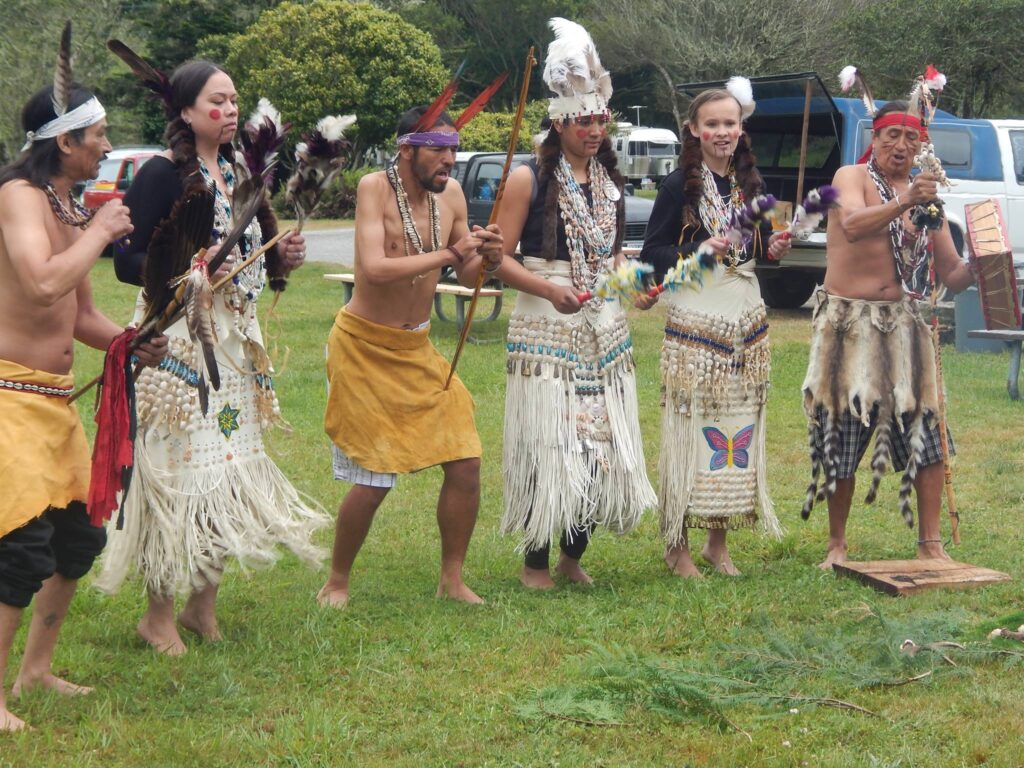
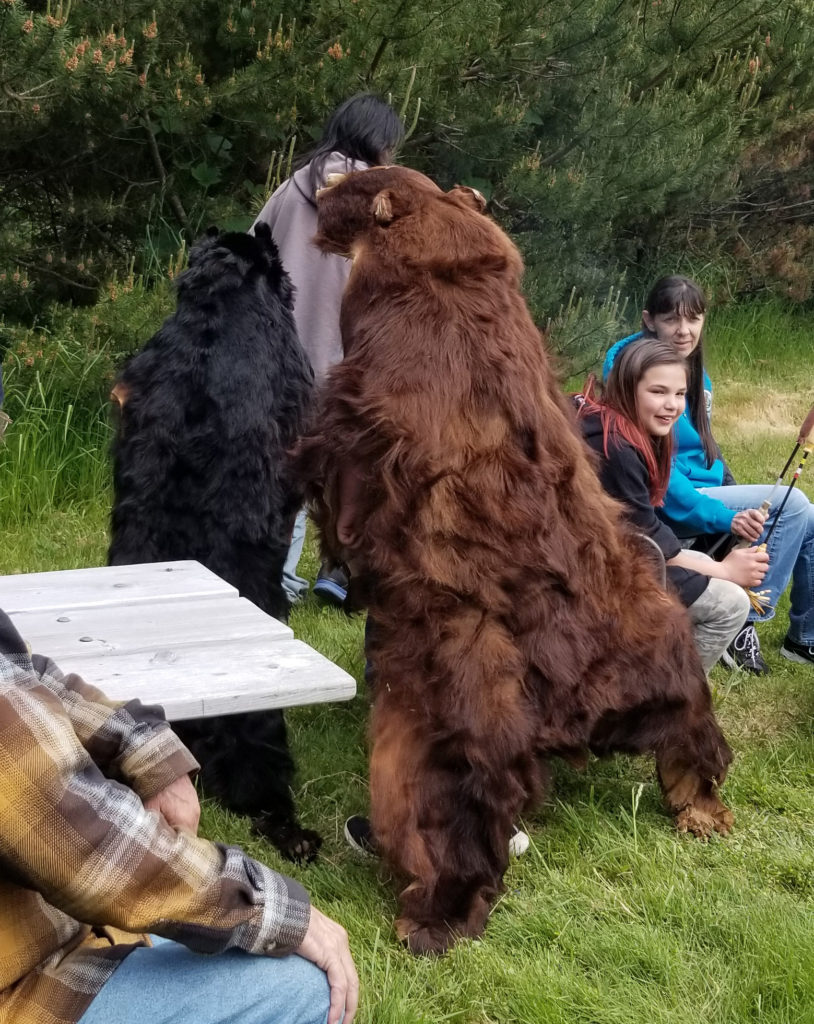
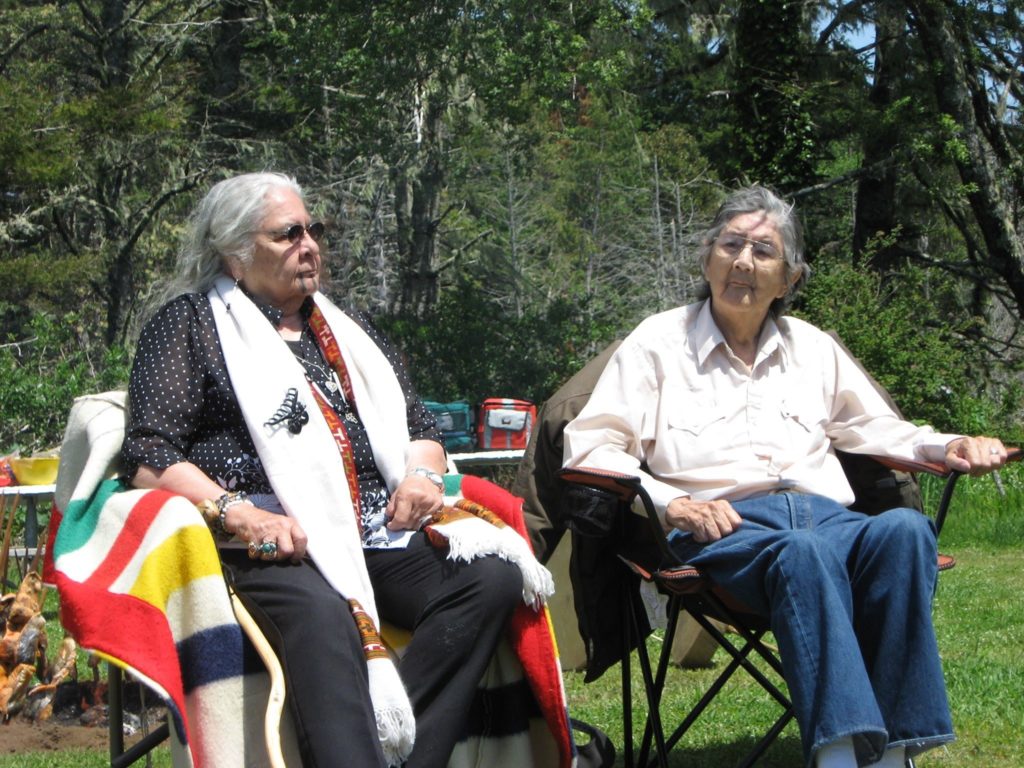
At Tseriadvn 2008
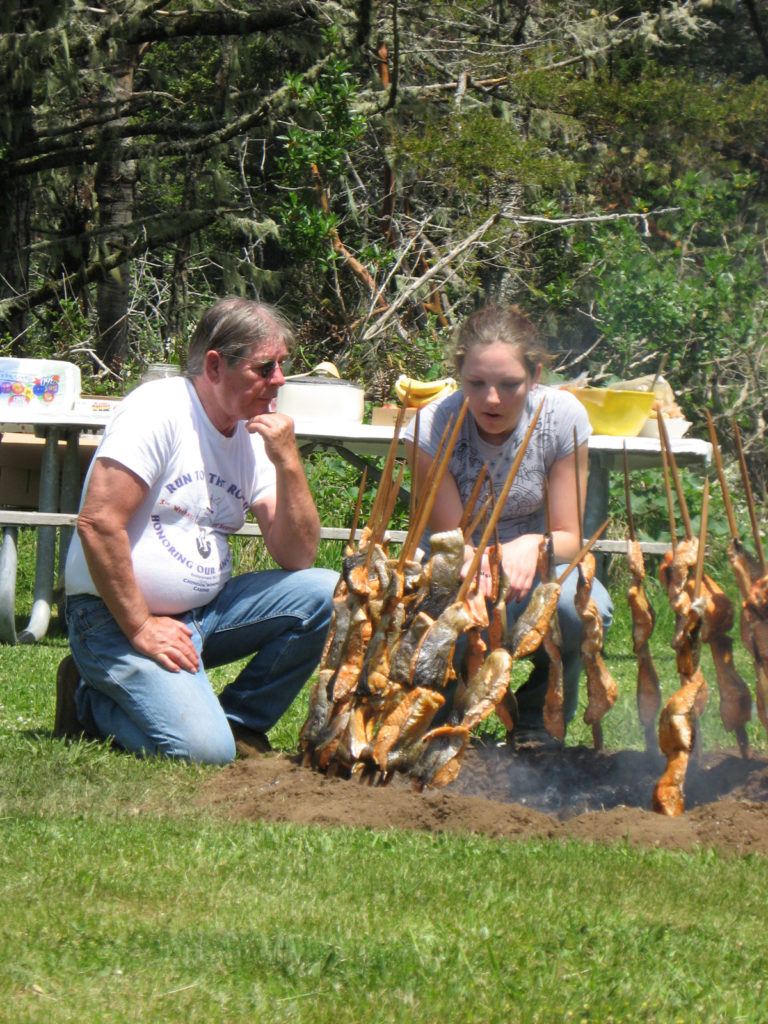
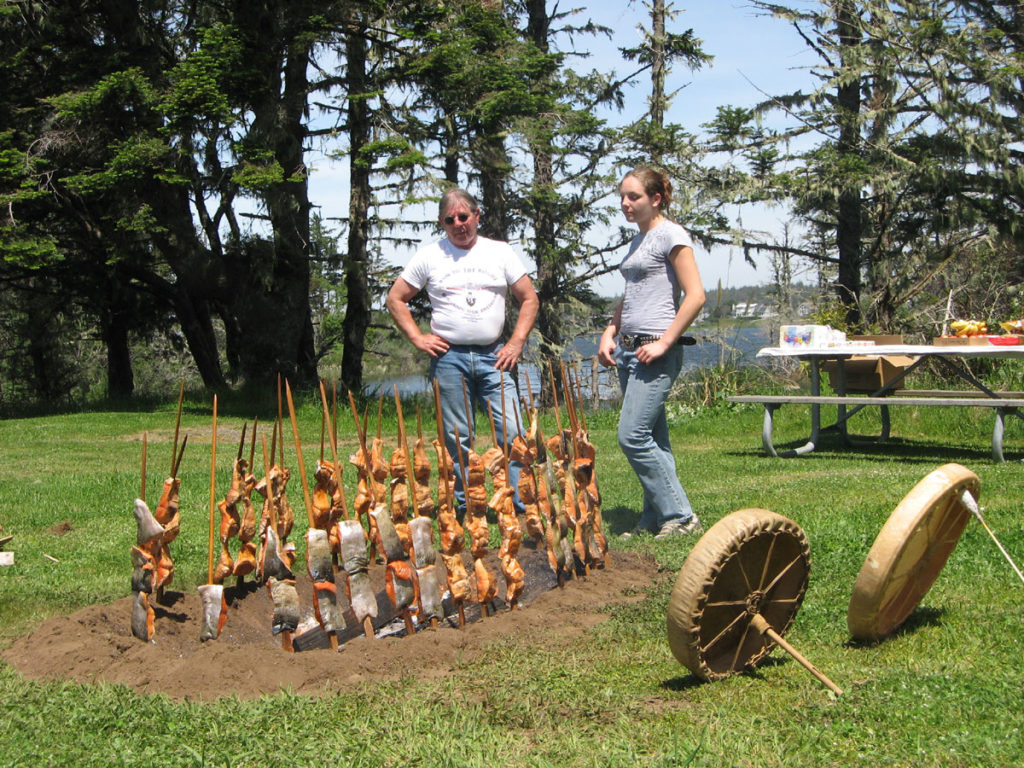
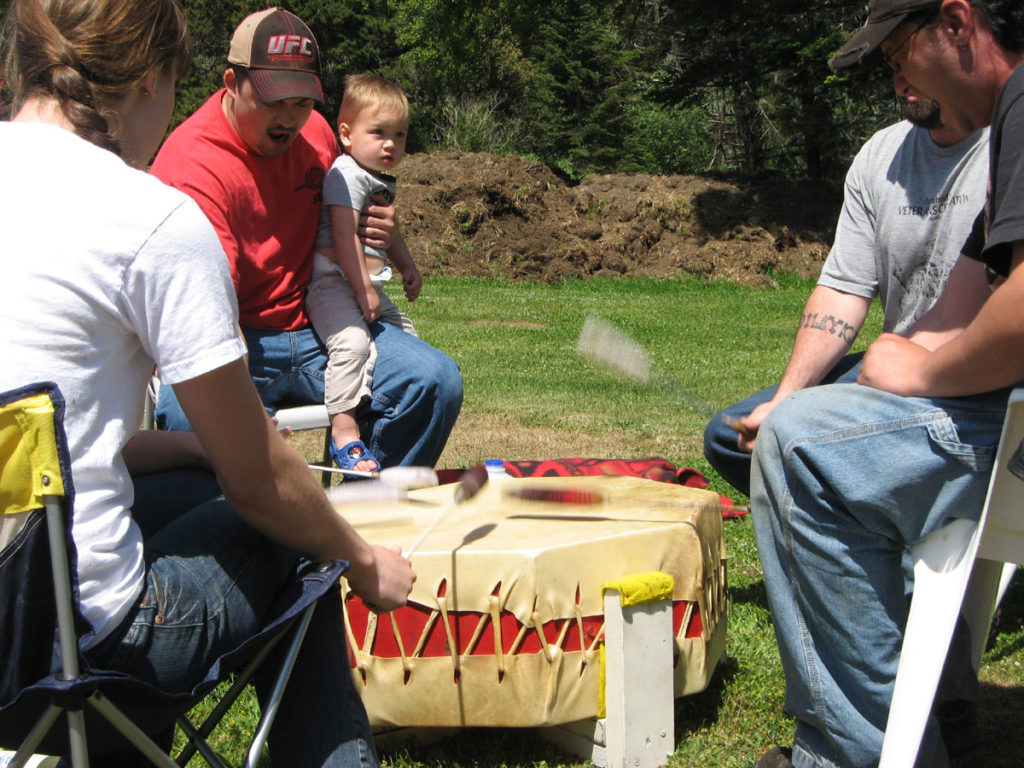
Katrina Fox, Eric Chouinard, John Mienin and Mike Vaughn
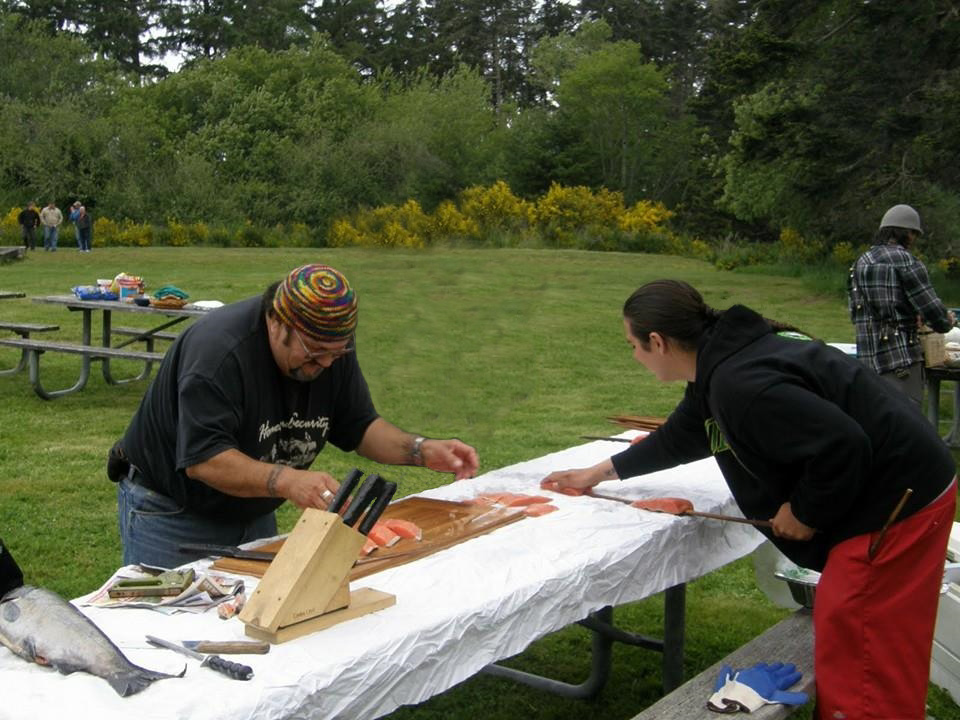
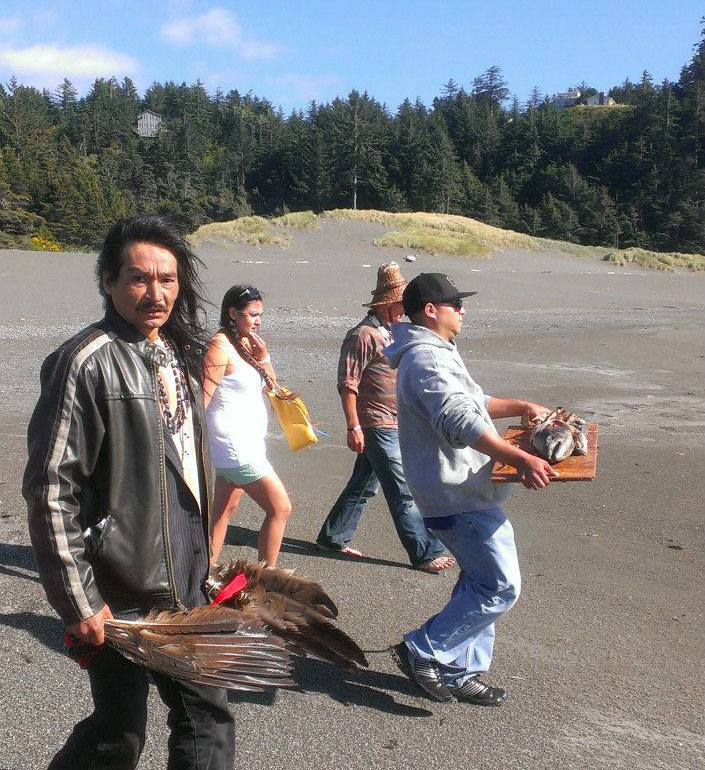
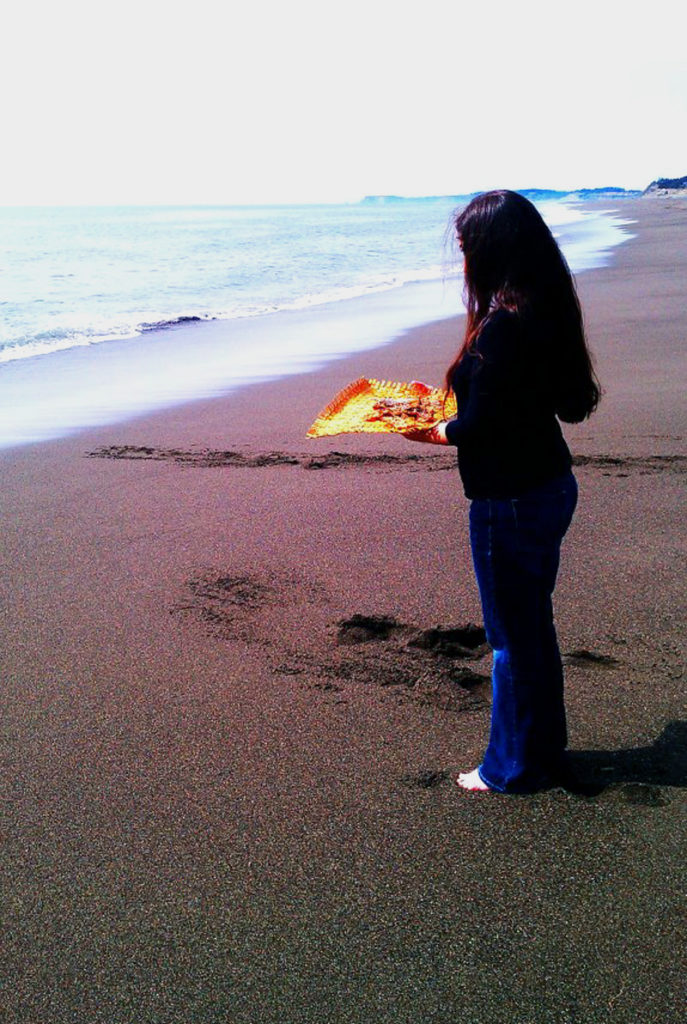
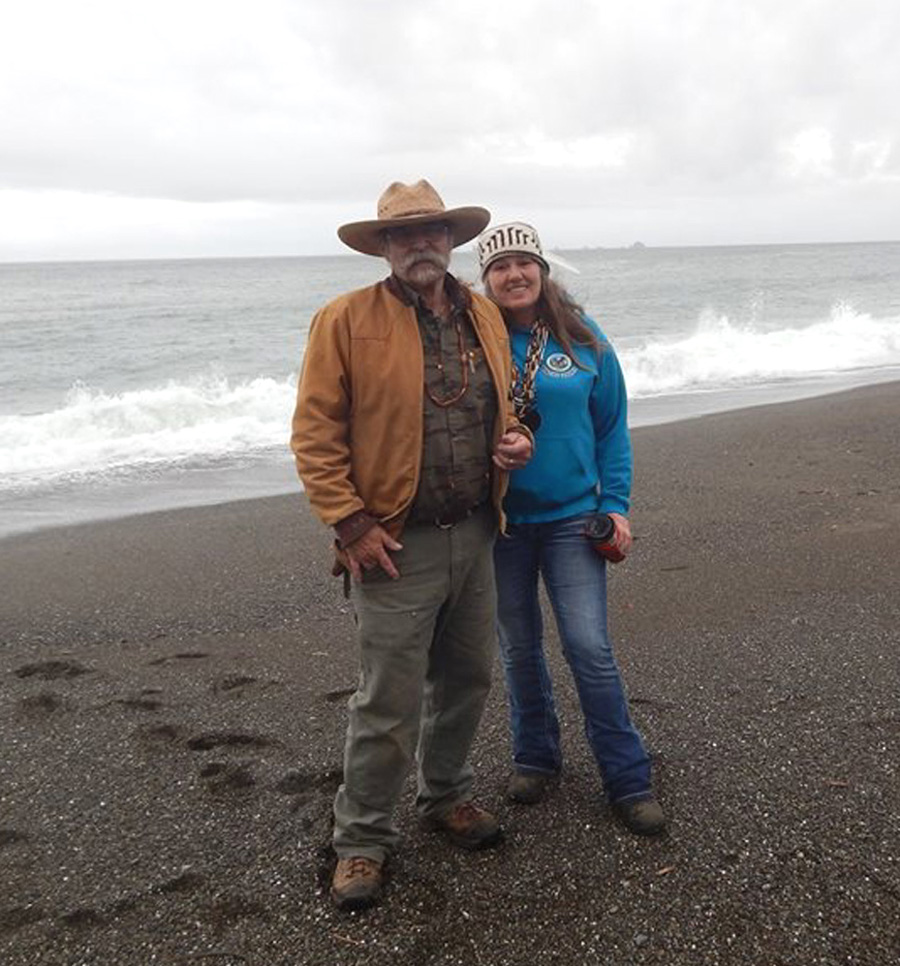
Shiela and Jim Rich ( Cow Creek) at Agate Beach, Tseriadvn State Park
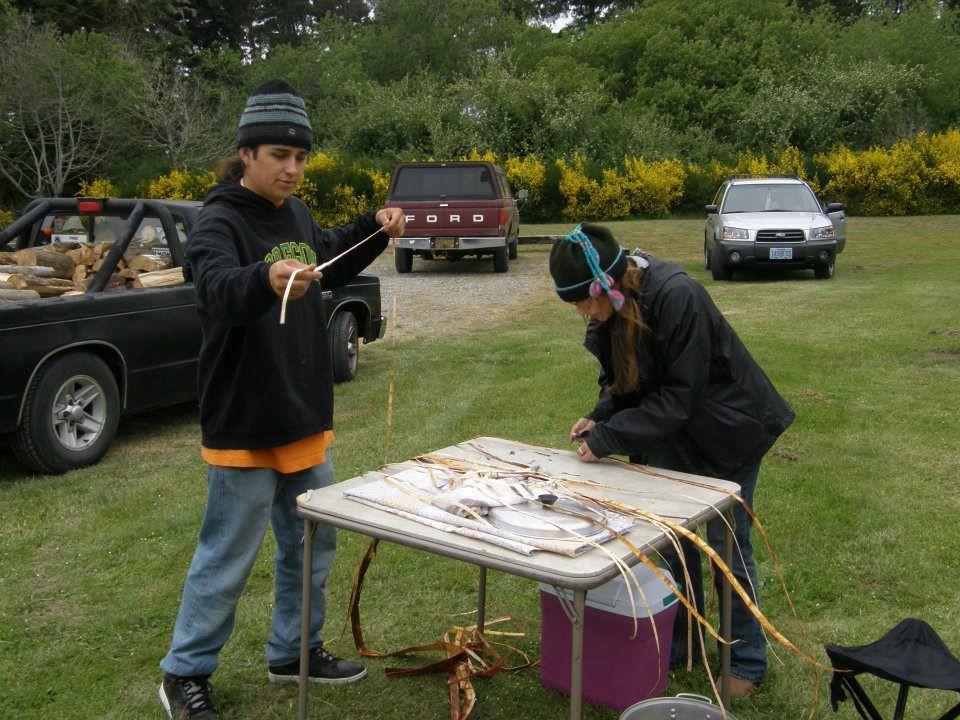
making a cedar bark mat to put the fish bones on
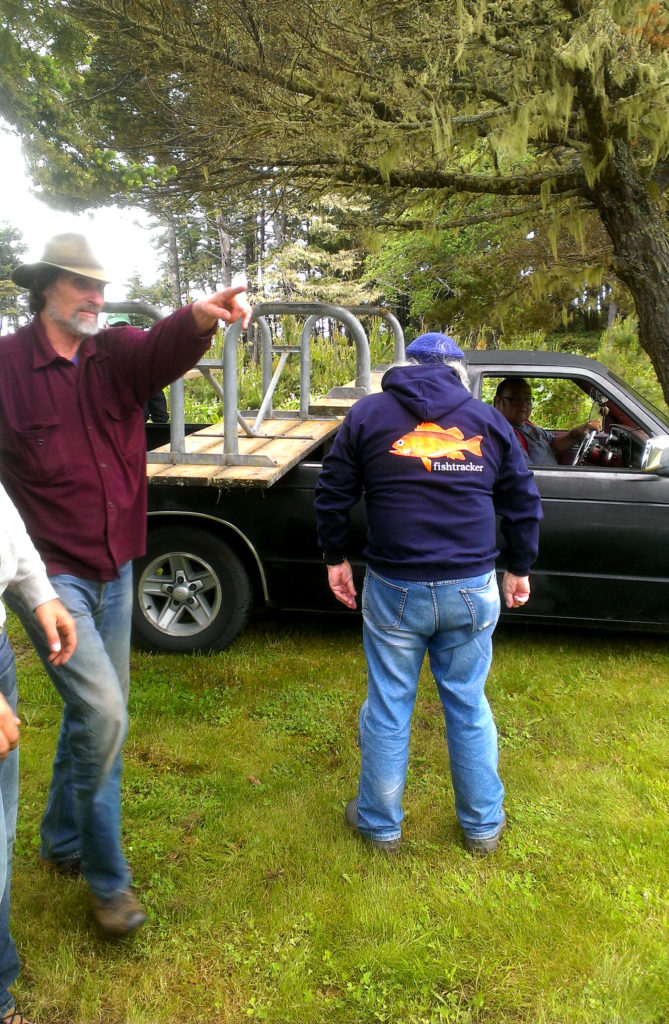
Moving tables at Tseriadun, Rick Cook, Gary Wickham and Bill Van Pelt
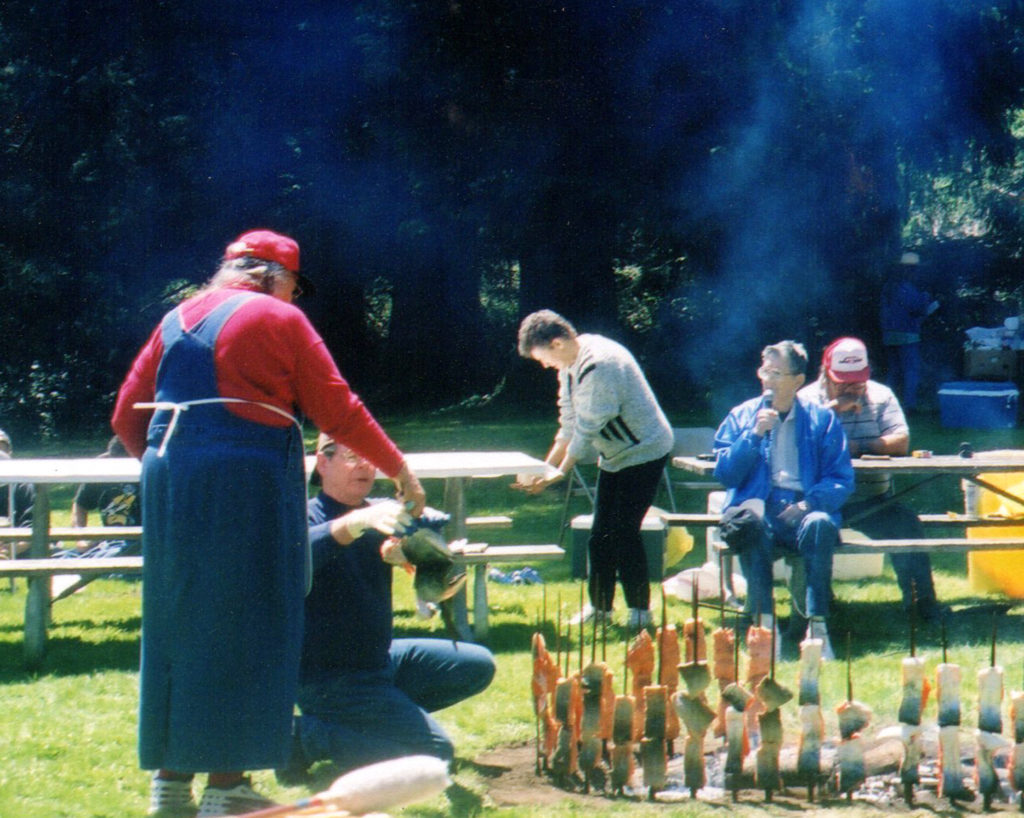
In the background, 2003 Heads Wayside State Park.
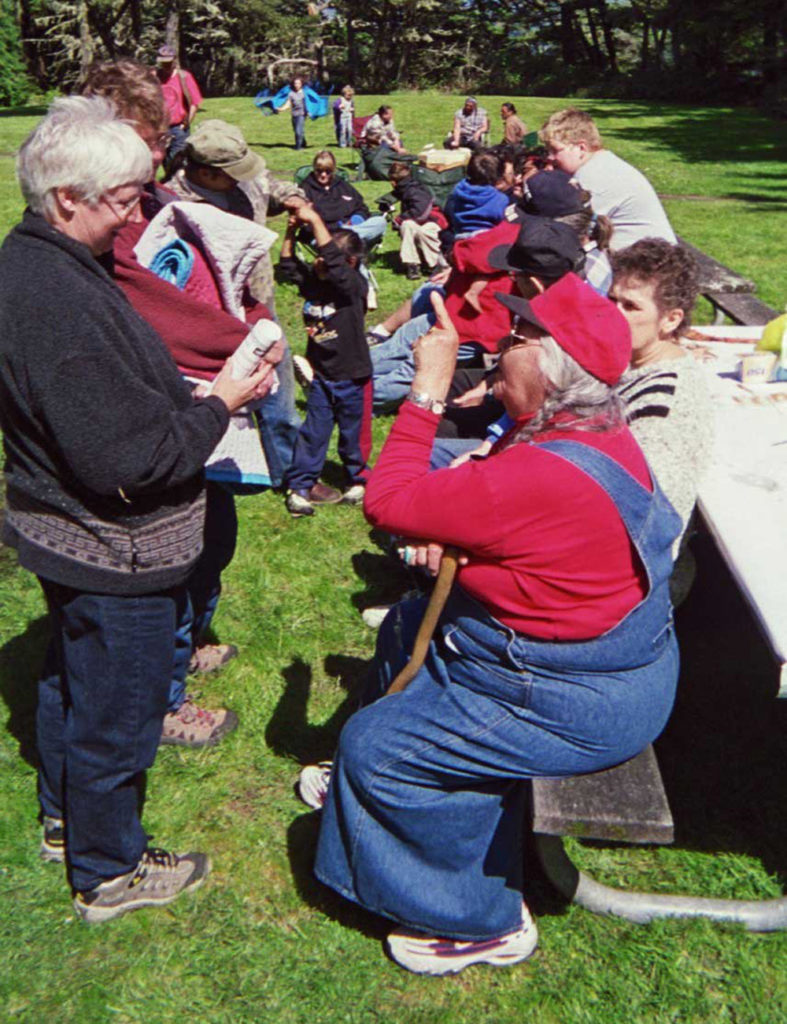
Sitting next to Aggie is Bev Fry and then Gilbert Towner
Foncy Prescott standing
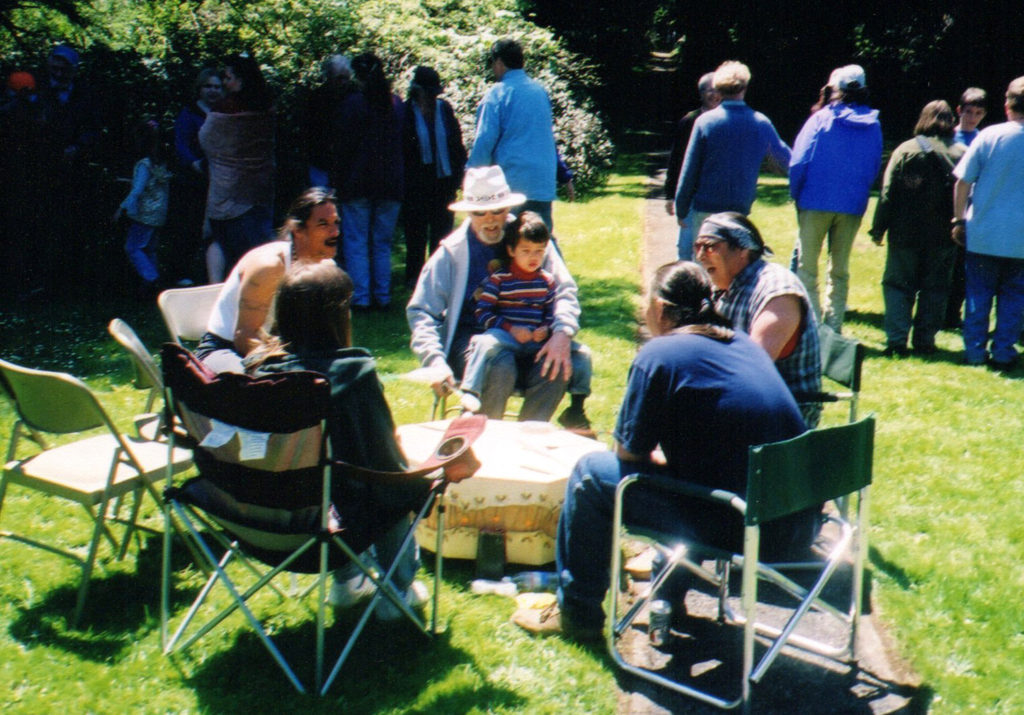
Going Sunwise, Barry Joyce and grandson Malakai, Tim Lobato, Dallas Socia, Katrina Fox and Rodney Fisher, 2003, Heads Wayside State Park.
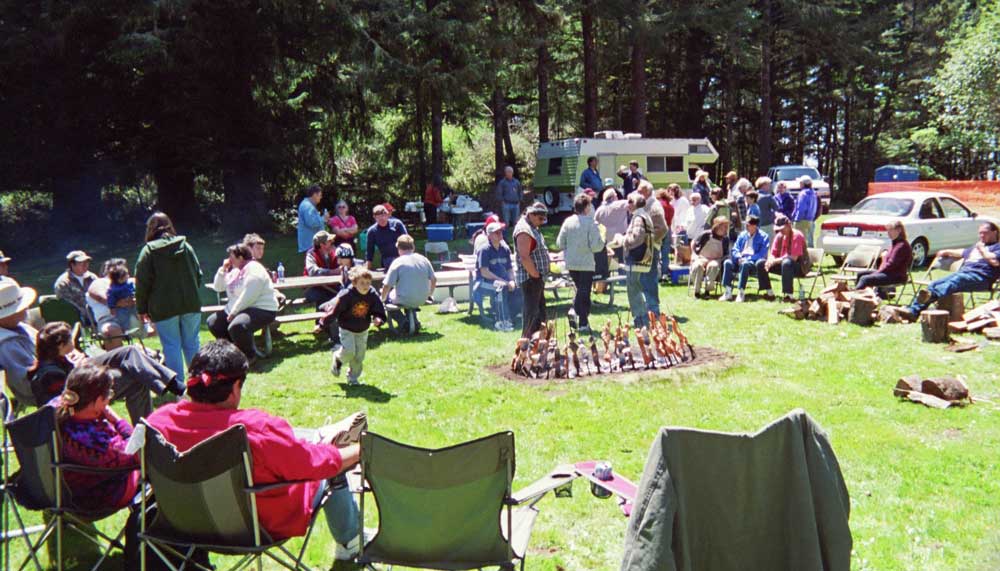
2003, Heads Wayside State Park.
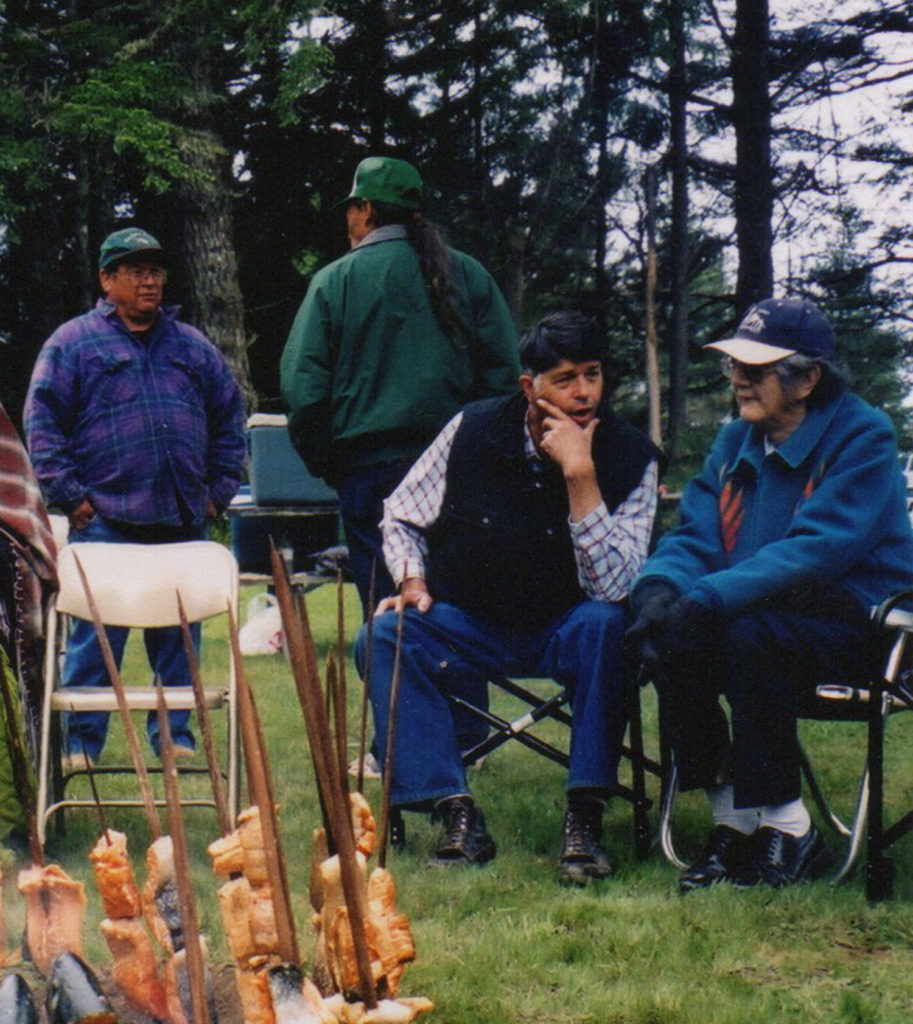
A little colder day at the Heads Wayside State Park
Everyone is sittin closer to the fire.
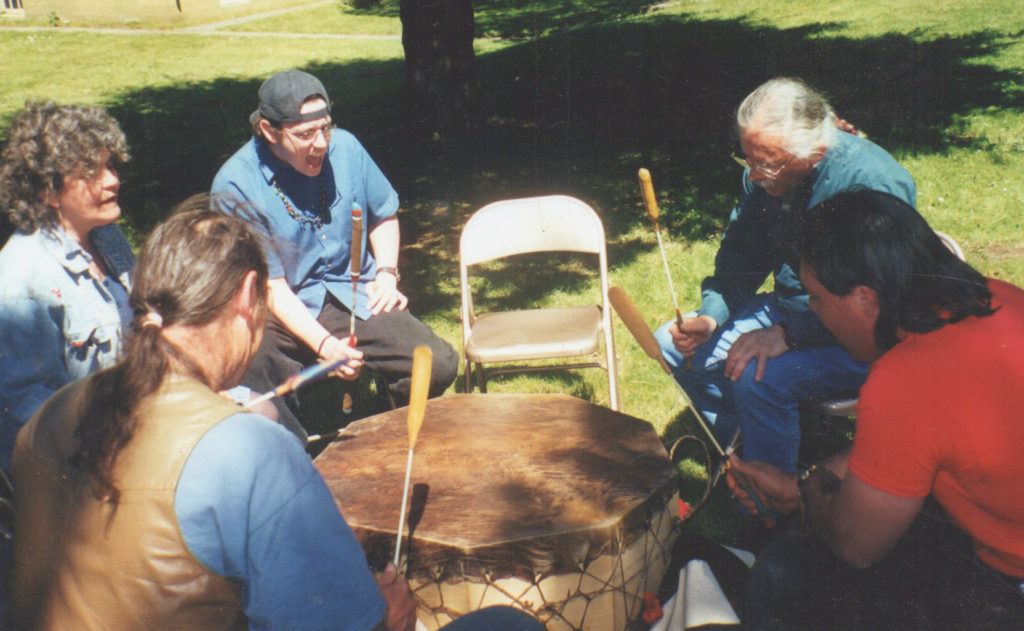
Port Orford Heads State Park 2001
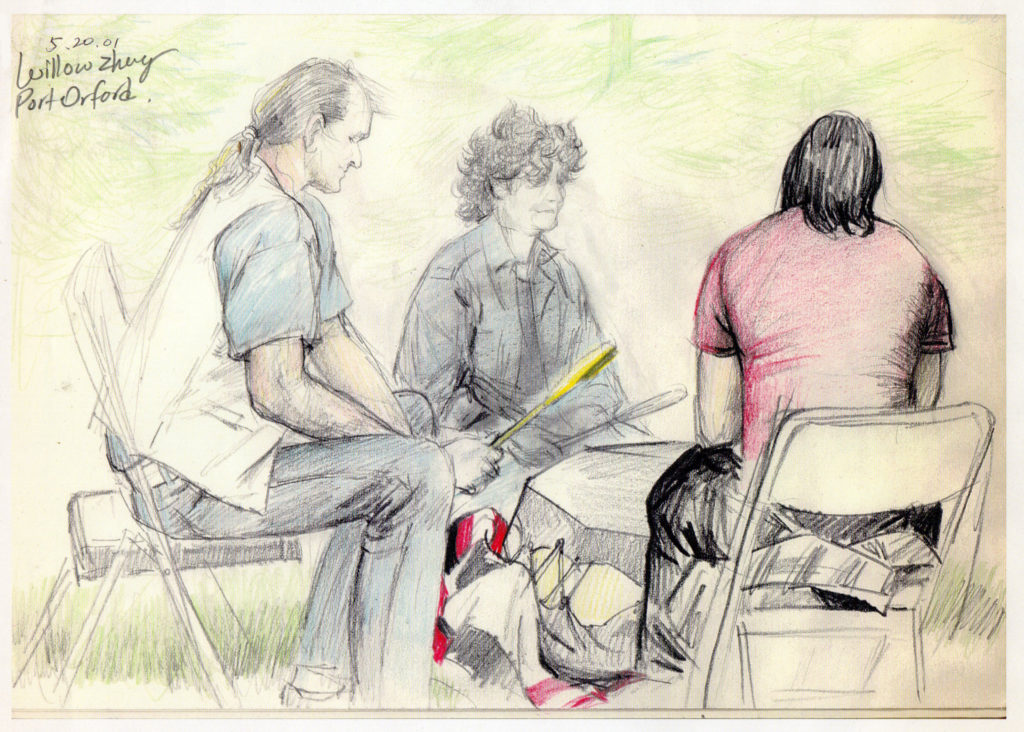
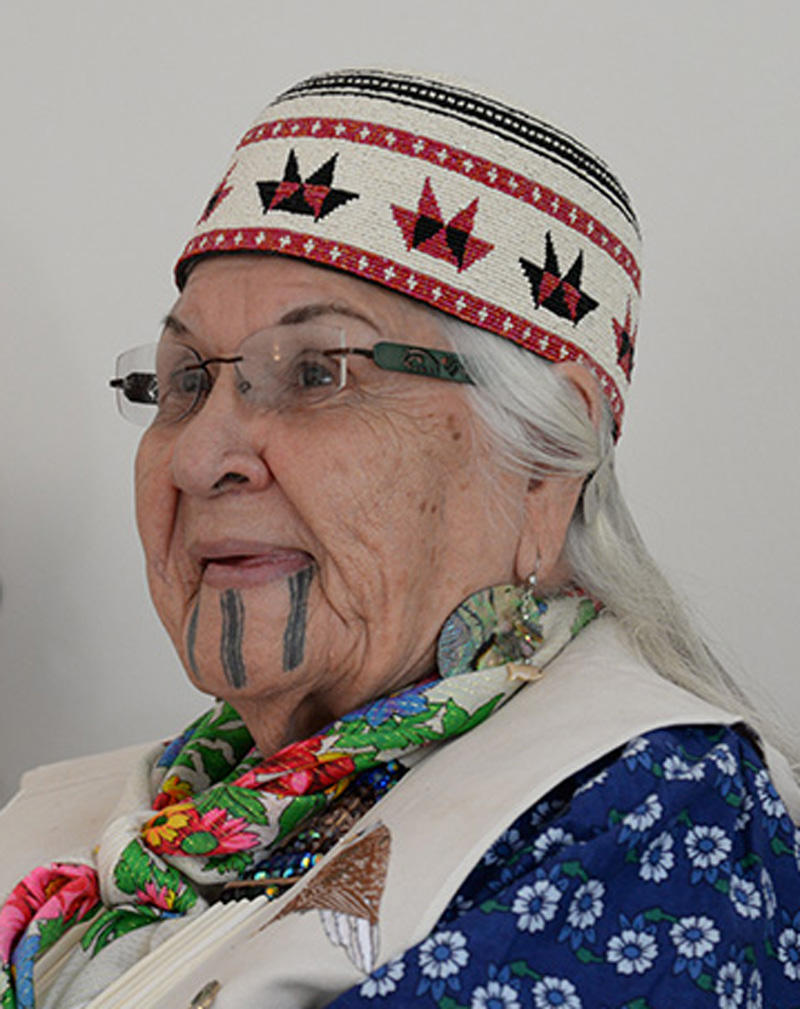
She is the oldest member of her tribe, the Takelma . She is also the Granddaughter of Jack Harney, the first elected Chief of the Confederated Tribe of Siletz. For over 15 years Grandma Aggie led the Ceremony, first on the Port Orford Heads and later at Tseriadun.
Our beloved Agnes Baker Pilgrim has gone on to join the creator and her ancestors. She crossed over Wednesday November 27, 2019. Please bless her journey with prayers from the heart. May our love make her journey smooth. Love to her children, grandchildren, and many relatives.
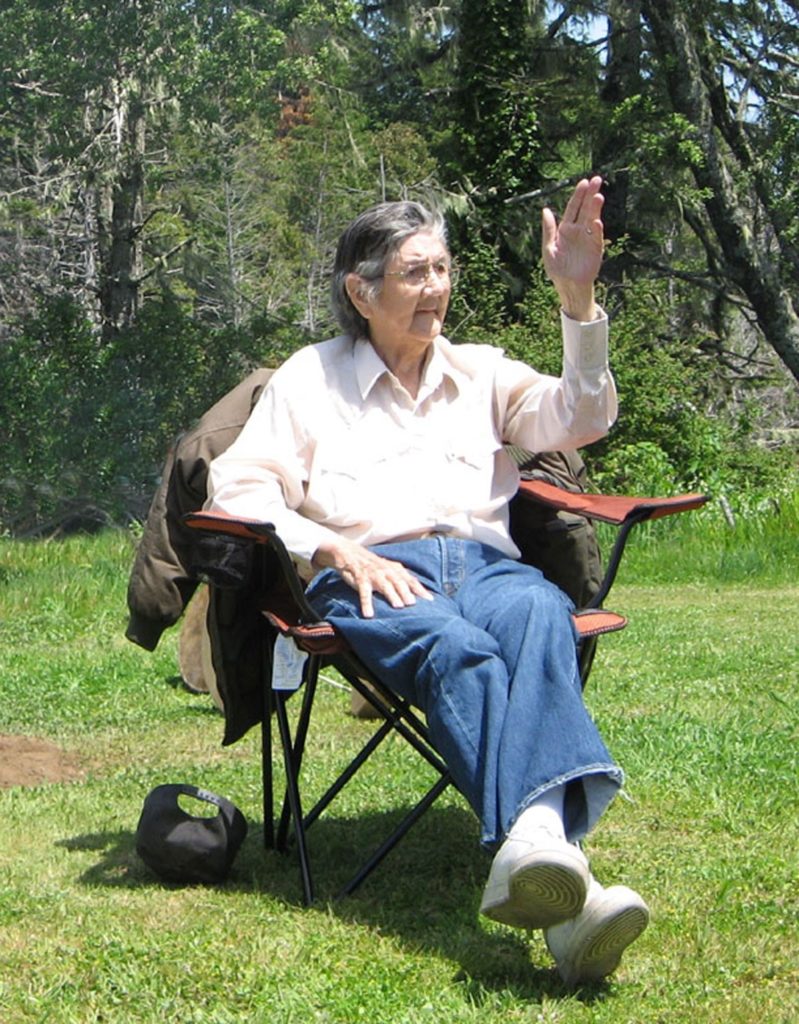
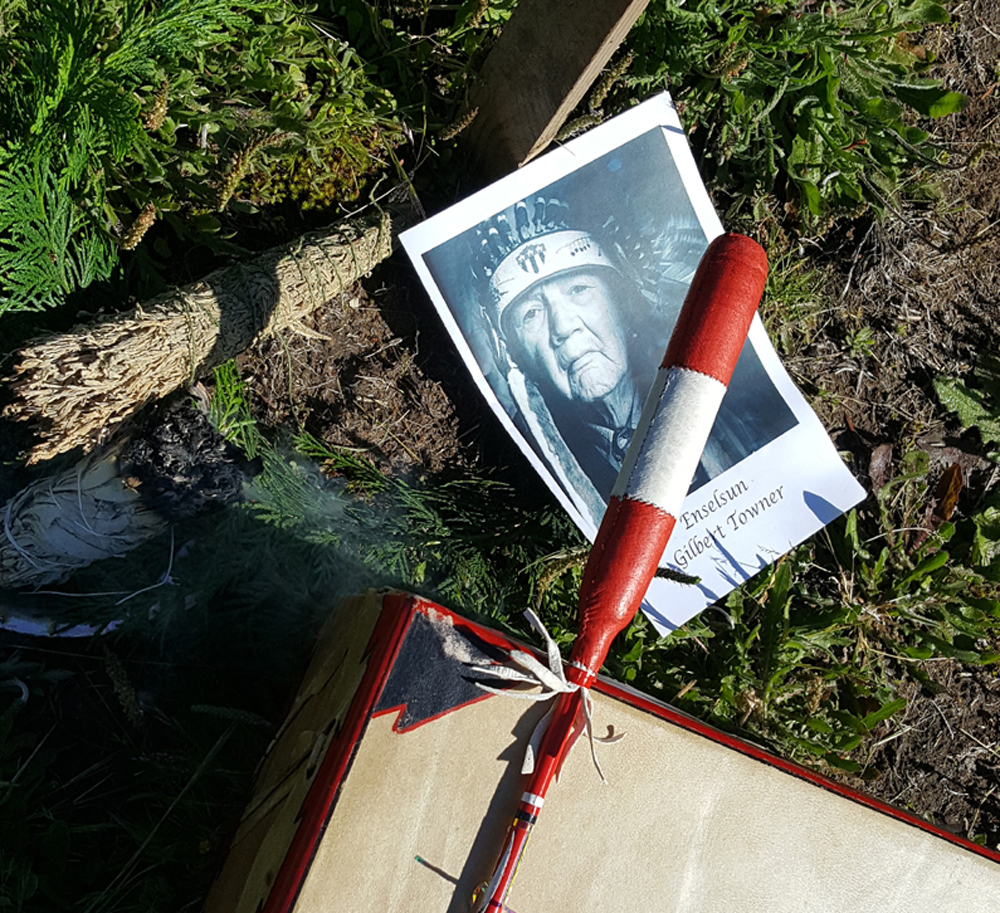
Our Honored Elder Enselsun Gilbert TownerEnselsun Gilbert Towner was born Dec. 12, 1929, to Leslie and Louise Towner at Siletz, Ore.,
Gilbert’s great-grandfather, Enselsun, was War Leader of the Tututni in the Rogue Wars. “Family members have served in WWI and WWII. We uphold the tradition of my great-grandfather, we are Americans.” Sergeant Towner was a Korean War Marine, surviving the Chinese Spring Offensive at the Chosin Reservoir.
Gilbert attended and oversaw the Tseriadun Honor Ceremony and Salmon Bake for 14 years.
He was fluent in his Tututni/Mackanotin Language, giving classes to Lower Rogue and
Coquille tribal Members. Sadly, he crossed over in 2009. We certainly miss him.
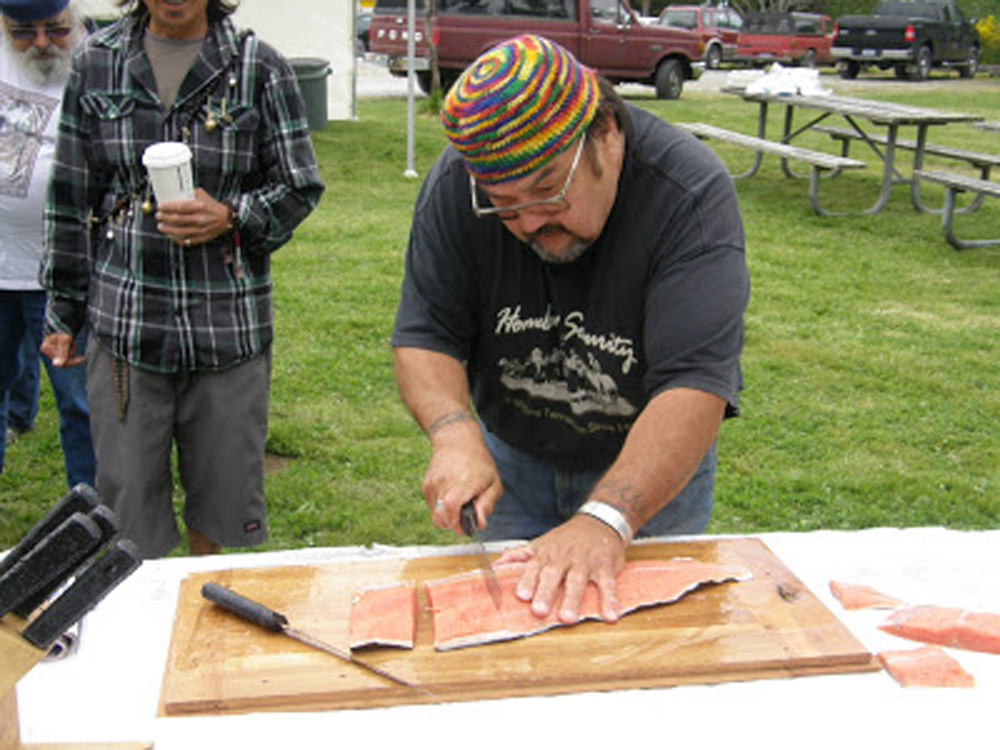
We miss you!
We honor two of our friends and relatives, Speedy and Donny Fry, who recently crossed over. Speedy was one of the founders of the Tseriadvn Honor Ceremony/Salmon Bake. He helped Grant Pilgrim cook the first years, then took over cooking in 1998. Speedy’s jokes and laughter will forever be missed.
Speedy’s cousin Donny, for over 25 years, organized the Fry Family POW WOW at Agness, Oregon. Donny attended the Tseriadvn Salmon Bake, contributing salmon, pop-up awnings and stories of life on the Rogue River
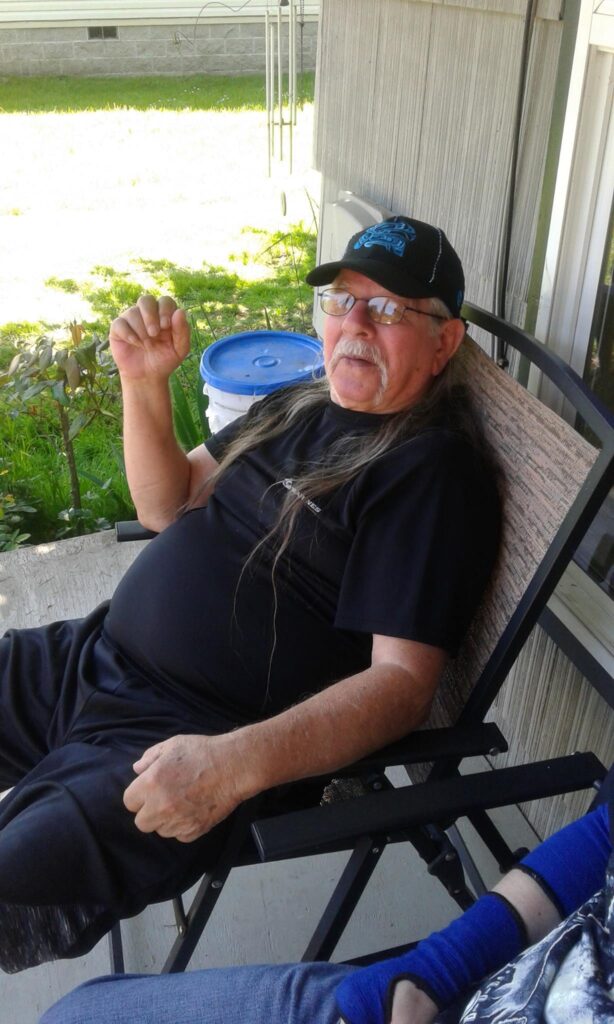
Raymond “Speedy” Fry
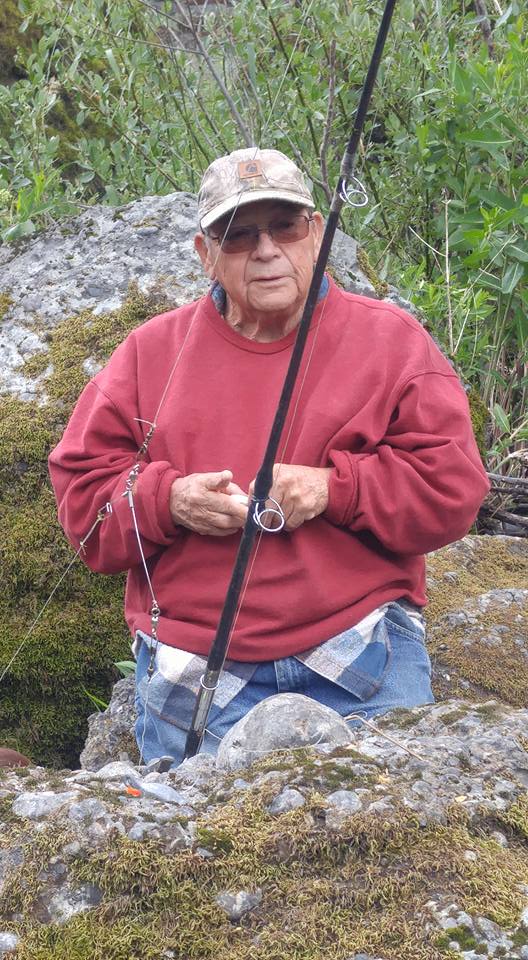
Donald “Donny” Fry
The following is a 2008 Newspaper article about our Tseriadun Ceremony.
Port Orford Today
May 22, 2008
Indian Honor Ceremony
By Ron Daves
Last Sunday at Tseriadun Day Use Park, people started arriving at about 8am. The crowd continued to grow until about 10, when we heard the boom, boom, boom coming our way from where the crowd was gathering. From our camp host’s motor home, we could see men digging a hole in the lawn.
Normally, this would be the harbinger of a big problem for a camp host. However, this was a gathering of several of our Indian tribes having an “Honor Ceremony and Salmon Bake”. The organizer had cleared the gathering and digging of a fire pit with the Oregon Parks and Recreation Department. There were people of Indian heritage from Confederated Tribe of Siletz Indians, which includes the Tututin and Takelma Tribes. Also attending were people from the Coos, Coquille and Karuk.
We sauntered into the crowd and found ourselves in a “Friendship Circle”, where everyone joined hands and rotated in a clockwise direction to the cadence demanded by the drum beats. Next, the circle broke into two lines and the lines proceeded to pass one-another with each person shaking hands with the person across from him. Nice way to interact with everyone.
Following that, an Elder, Gilbert Towner, 79 years of age, from Idaho, called everyone to an “Elder-Speak” gathering, Mr. Towner, known as “Enselsun”, and 84-year old Aggie Pilgrim spoke to the respectful group about loving one another and respecting our rivers and streams, among other uplifting subjects.
Aggie Pilgrim told of her world travels with 12 other grandmothers from various countries. This group of 13 grandmothers has spoken worldwide, even to the Pope, about respecting our rivers and streams and not turning them into garbage dumps.
Next, the Wild Salmon, which was cooked on sticks by the fire in the hole the men had dug, was served together with fry bread. We had eaten lunch shortly before the salmon was served, so we took our fish home for dinner. It was delicious. This was a great day for myself and my wife, Sandra, to enjoy these gentle people and to experience their history and customs.
Tseriadun History By R. Scott Byram, Ph.D. Coquille Indian Tribe Consulting Archaeologist
Tseriadun (Port Orford Heads) was a unique Native village on the Oregon coast. Located near a coastal headland, offshore islands and reefs, and a coastal lake that was once an estuary, the village had access to a tremendous variety of resources from the sea and the land. The name Tseriadun comes from the large rocky headland that offered protected waters for ocean canoeing during much of the year.
From their homes by the coast, it was only a short hike to mountain hunting camps, and fishing sites along Kusuma (the Elk River), one of the most productive salmon streams on the Oregon coast today.The people of Tseriadun were wealthy in many ways. They lived in finely made houses built of cedar planks, with smooth clay floors. Like others in southwest Oregon, they made fine stone tools, and they were known for their sea hunting skills. They were expert canoeists, fishers and hunters, and skilled artisans. They used hundreds of native plants for food, medicine, and a variety of other technologies.The Tseriadun people spoke an Athapaskan dialect, reflecting strong ties to the Tututni and Totowa to the south and the Coquille to the north and east. They often traveled to distant villages for celebrations, trade, gaming and athletic events, and to visit relatives. Storytelling was more than a pastime; it was a way to pass on history and cultural tradition. Women usually married into Tseriadun from other communities at the Rogue or Coquille rivers and beyond, and it was not uncommon for several different dialects to be spoken in one village.Archaeological evidence shows that the native people lived at Tseriadun for over 5,000 years, and possibly more than 10,000 years. Most of the food remains at archaeological sites in Port Orford are of marine origin, including the bones of whales, sea lions, seals, sea otter, rockfish, salmon, and shellfish, especially mussels.In 1856 the Tseriadun people were forcibly removed from their homelands by the U.S. military, and relocated at the Coast Reservation (later called Siletz Reservation). Many of their descendants live at Siletz today. Other descendants trace their ancestry to those who moved back to the southern Oregon coast after the government closed portions of the Coast Reservation in the 1870s.
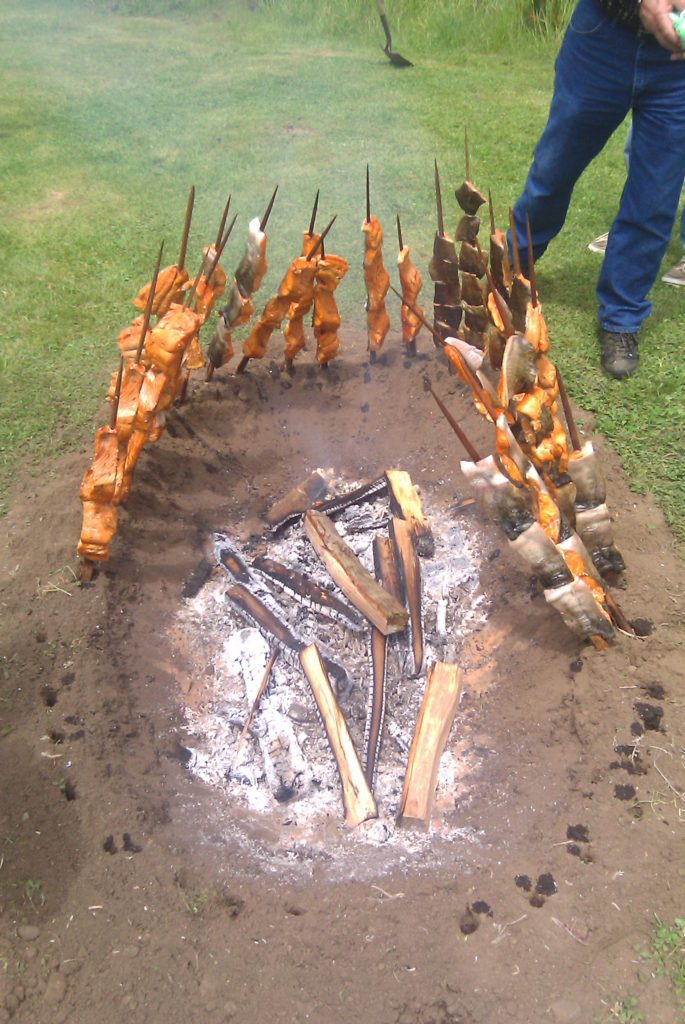
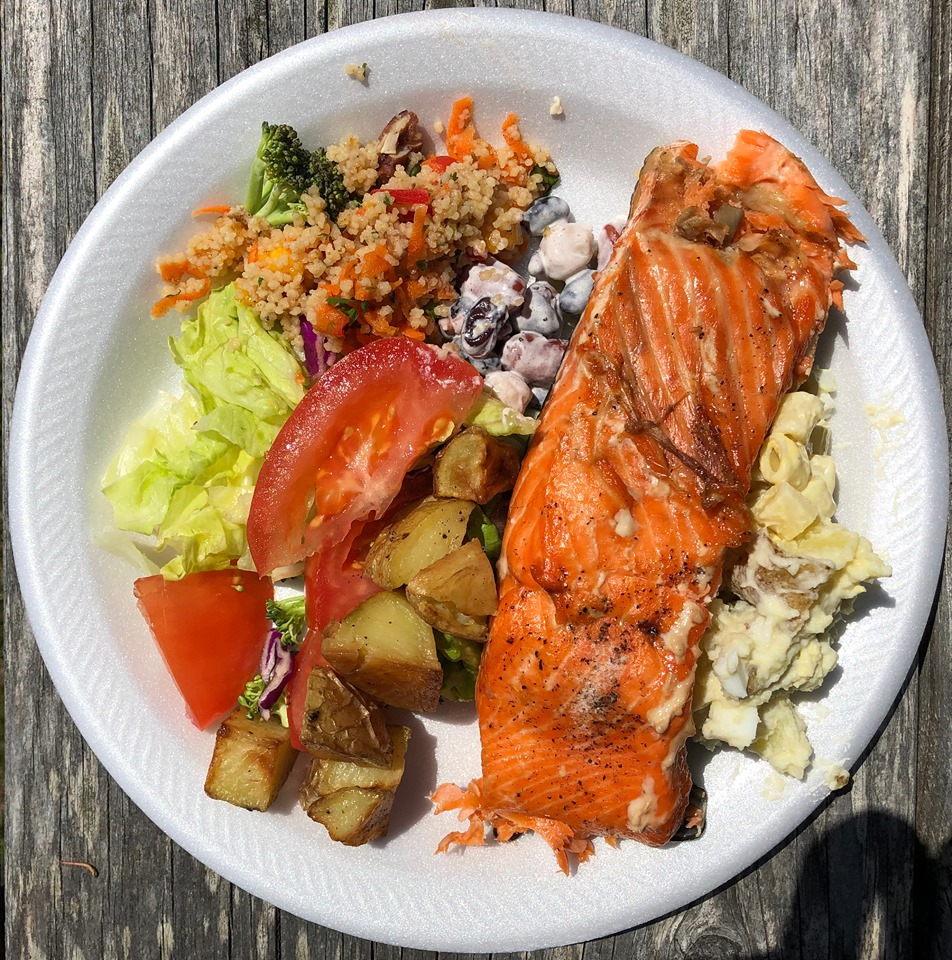
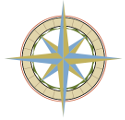
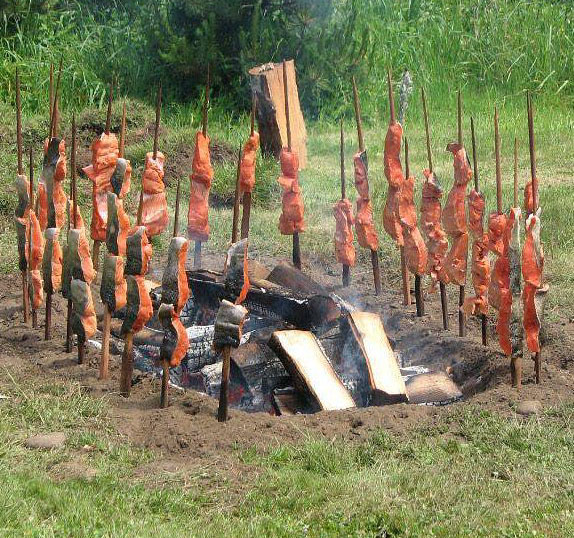



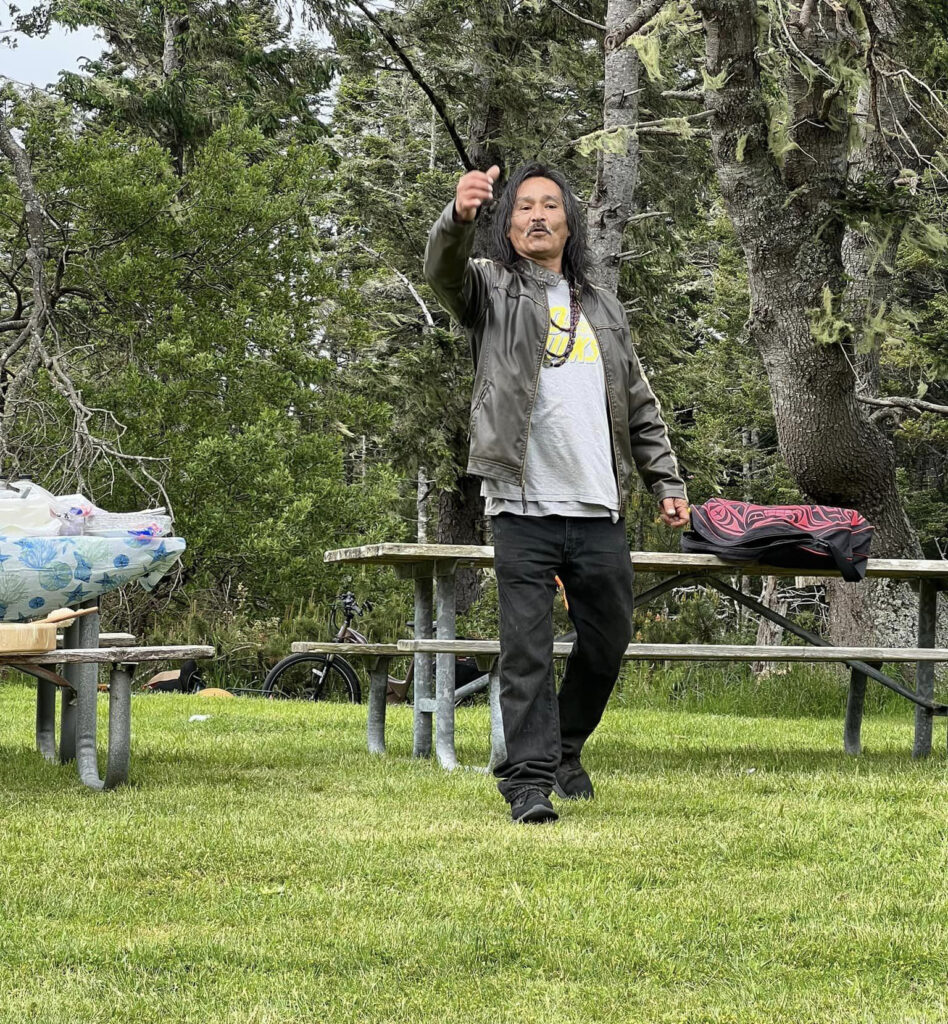
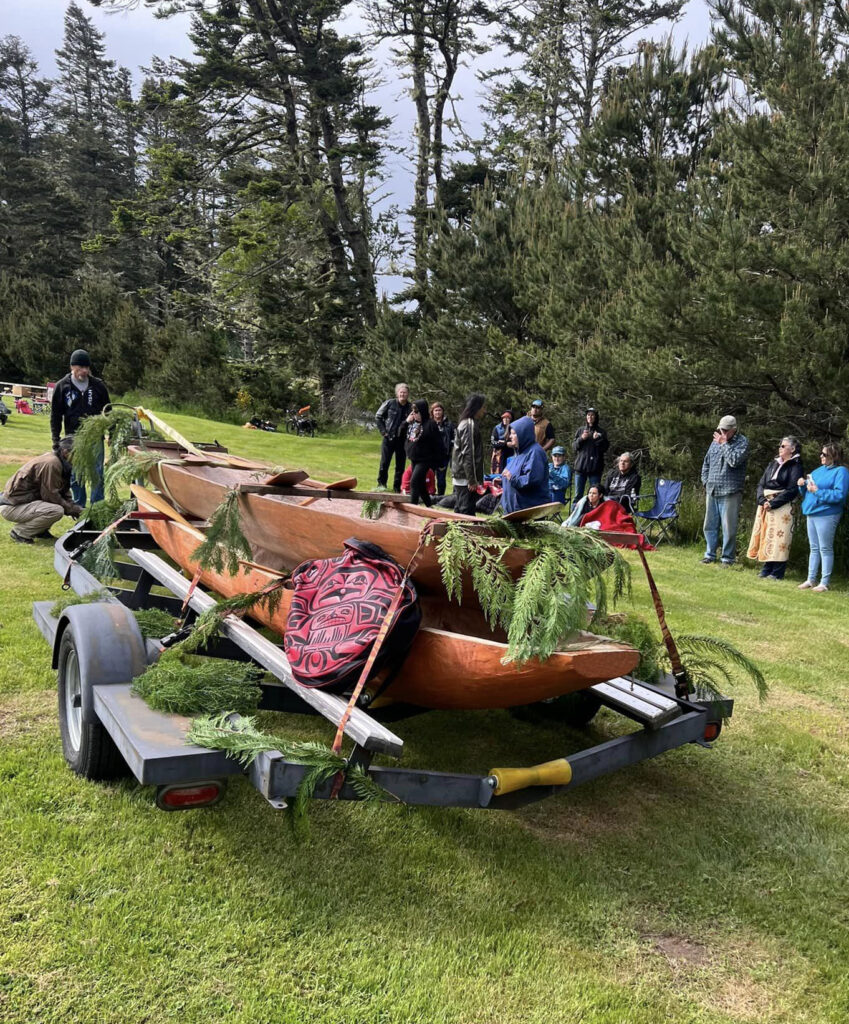
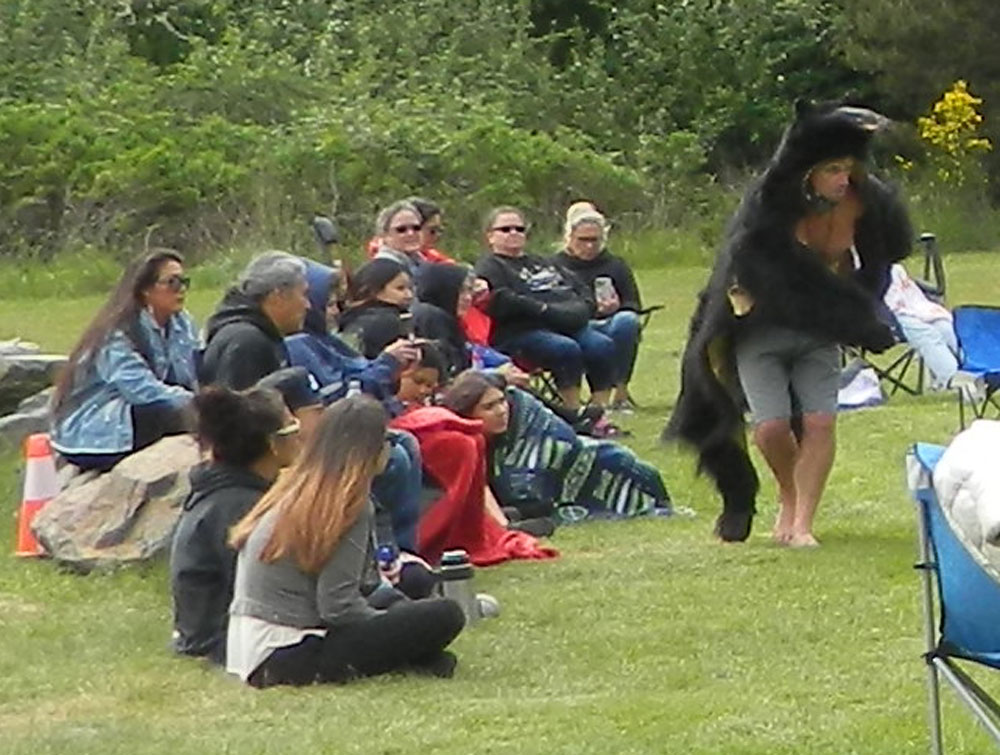
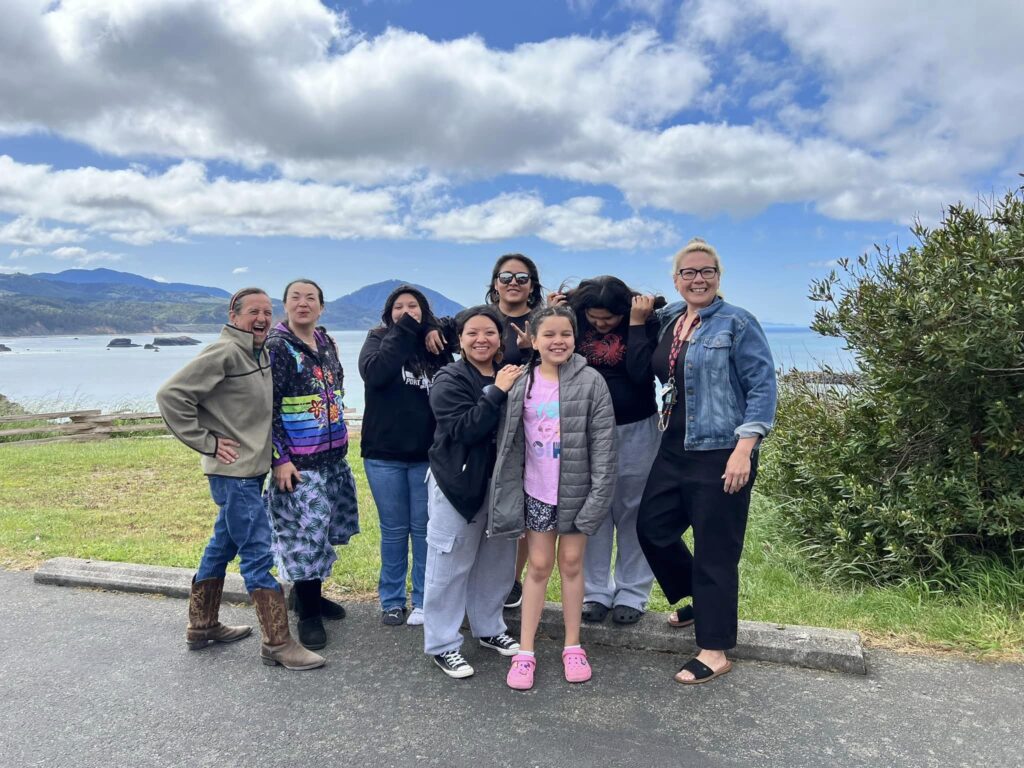


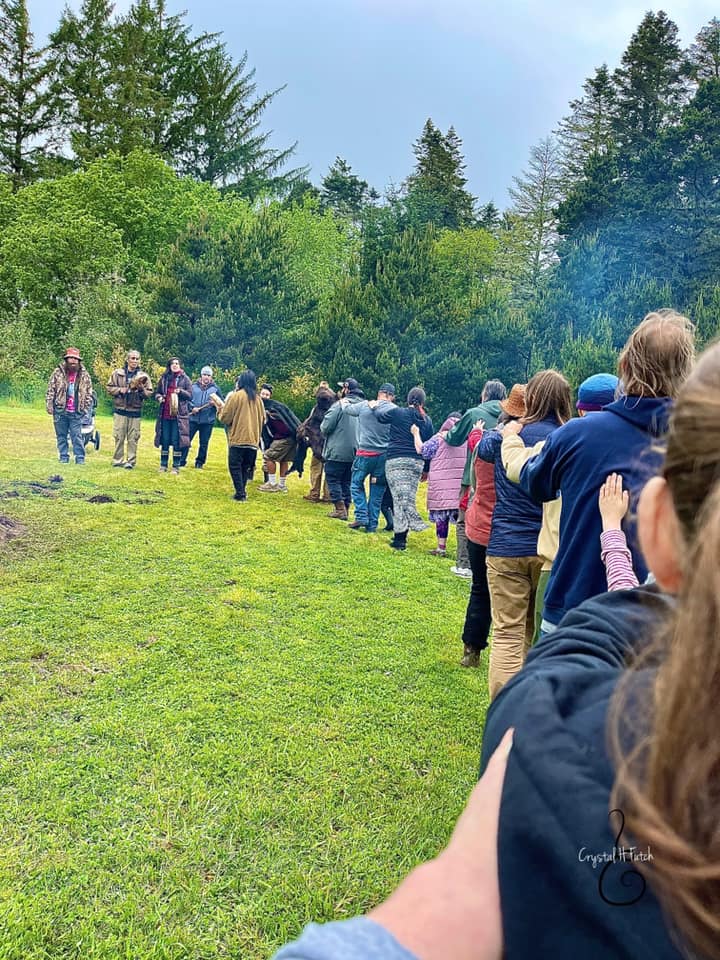

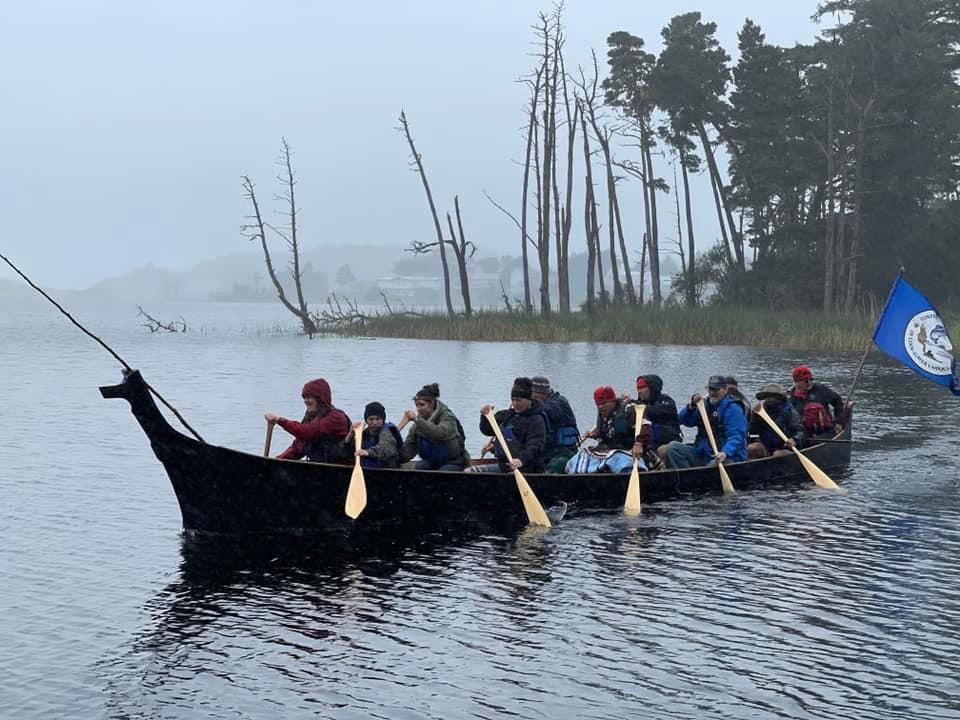
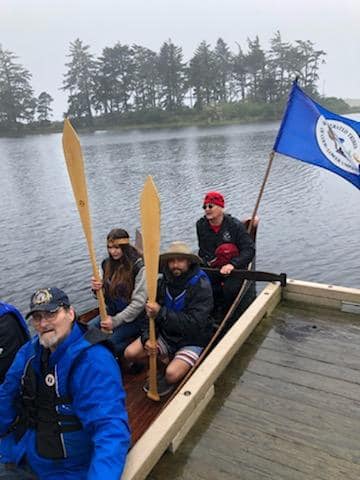
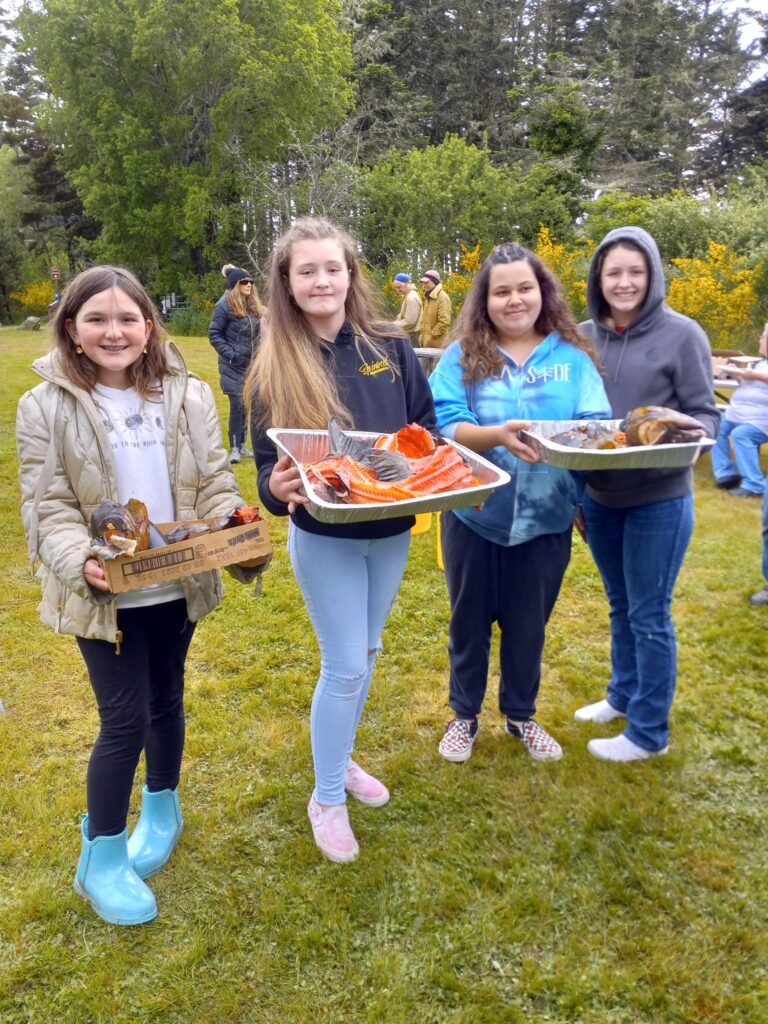
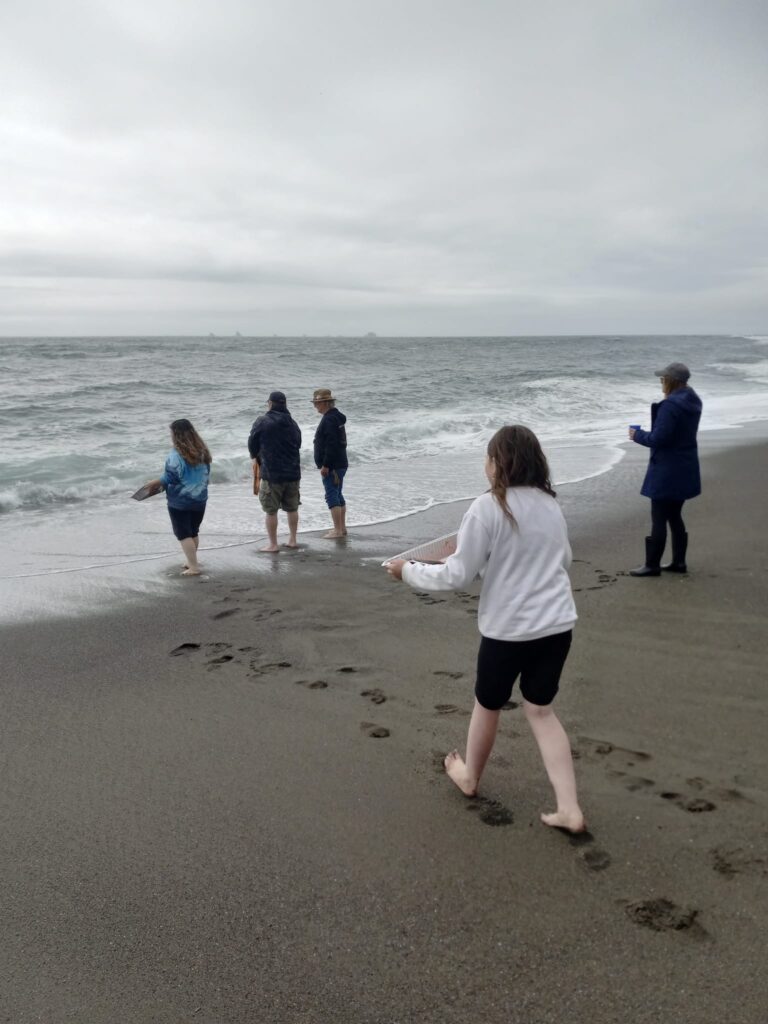
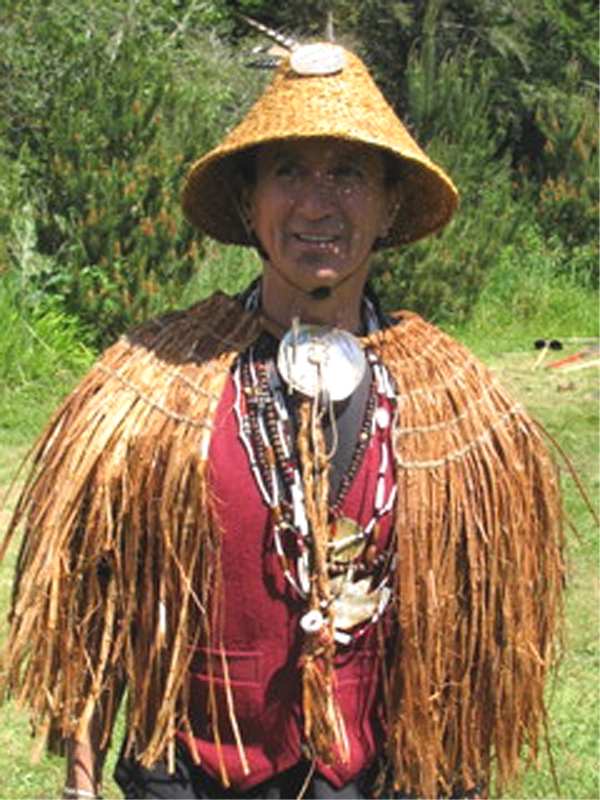
Noch.nos.sia a.k.a. Willie Towner
Thluke’ hemutz ne’ itsla….( we should never give up on our spiritual journey! ) Thank you for your time n efforts in creating this footage. We have soooooooo much more to offer and share. Especially about #REALHISTORY !! #wearestillhere
admin
Looking forward!
Cathy Boden
Thank you Rick for capturing this continuing story. It has been such an honor to be welcomed to participate.
Cathy
Rick Cook
You are Welcome Cathy. We appreciate You and John’s support of this event. For me, it has also been an honor and privilege to be part of this.
HA-KA'NE tha TUTUTNI WARRIOR Kyle towner
(DOK’YU-LA ANIETT’A) “How you doing ” TUTUTIN” WANNA GIVE THANKS FOR EVERYONE WHO PUT THE ENERGY TIME AND EFFORT BLOOD SWEAT AND TEARS INTO THIS SALMON BAKE I WANNA GIVE THANKS TO OUR ANCESTORS WHO PADDLE AND PAV’D THE WAY FOR GENERATIONS PAST PRESENT AND FUTURE 🙂 TO HONOR THIS PLACE AND THE INDIGENOUS FAMILYS THAT ONCE CALLED THESE GROUNDS HOME! I WANNA GIVE SPECIAL ATTENTION TO RICK,MY GRANDFATHER GILBERT, UNKLE SPEEDY , AND KUZZIN BILL WHO LEANRED ME TO COOK THE TRANDITIONAL WAY. OF OUR PEOPLE I WANT TO GIVE A BIGGER APPRECIATION FOR MY FATHER WILBUR “WILLY TOWNER FOR CONTINUING THE RELATIONSHIP AND PROGRESS OF THIS PROJECT AND CERAMONEY AND MAY THE TEACHERS THAT PASSED KNOWLEDGE AND WISDON FOR EVER BE REMEMBERED FOR THE SACRIFICE THAT IT TOOK TO MAKE THIS HAPPEN EVERY YEAR MAY I WISH THIS SALMON BAKE MANY MORE YEARS TO COME SINCERELY – HA-KA’NE THA TUTUTNI WARRIOR AKA KYLE JACOB TOWNER ,
Rick Cook
Thank You Kyle. Your dad and grandfather would be honored by your words.